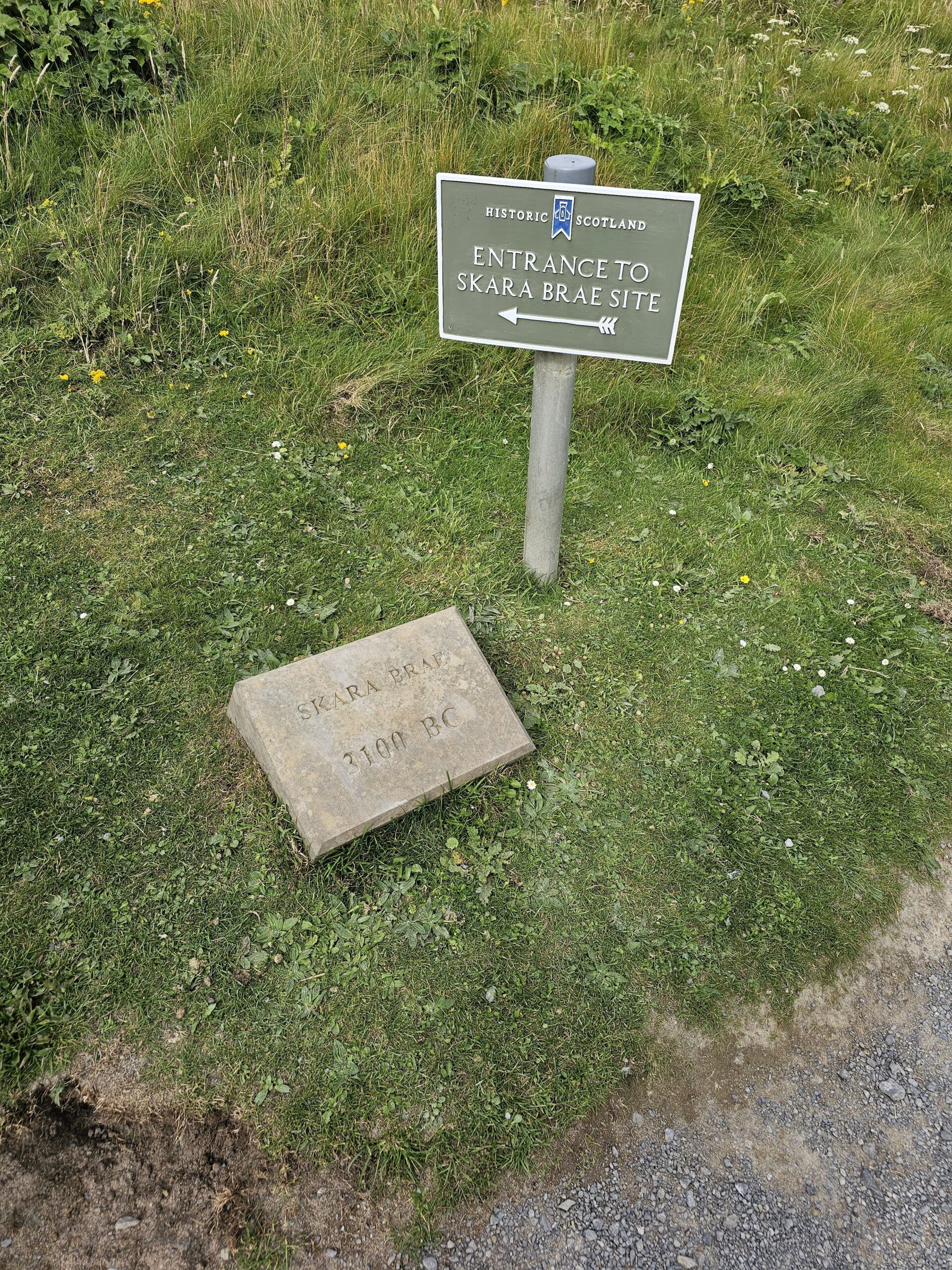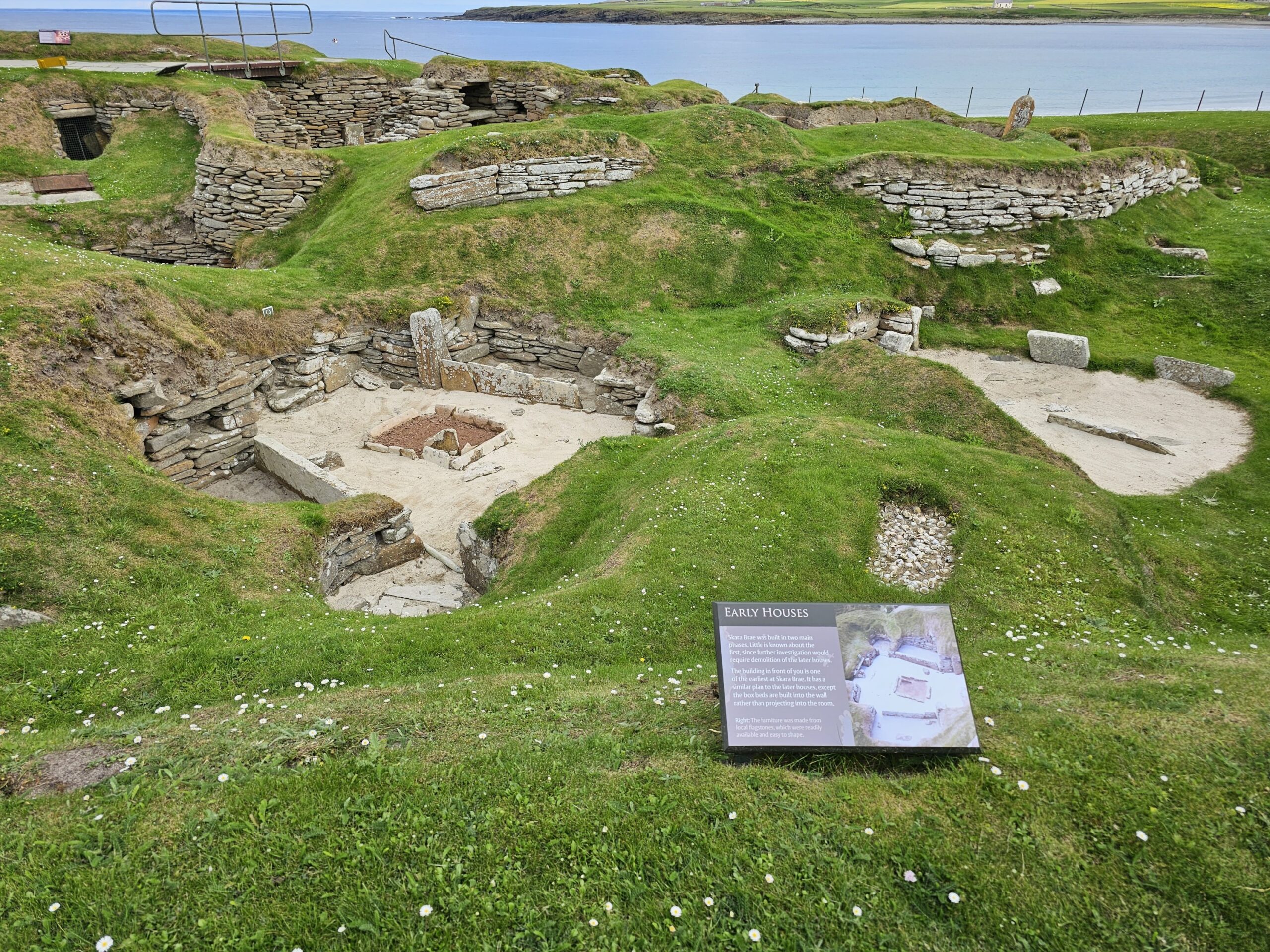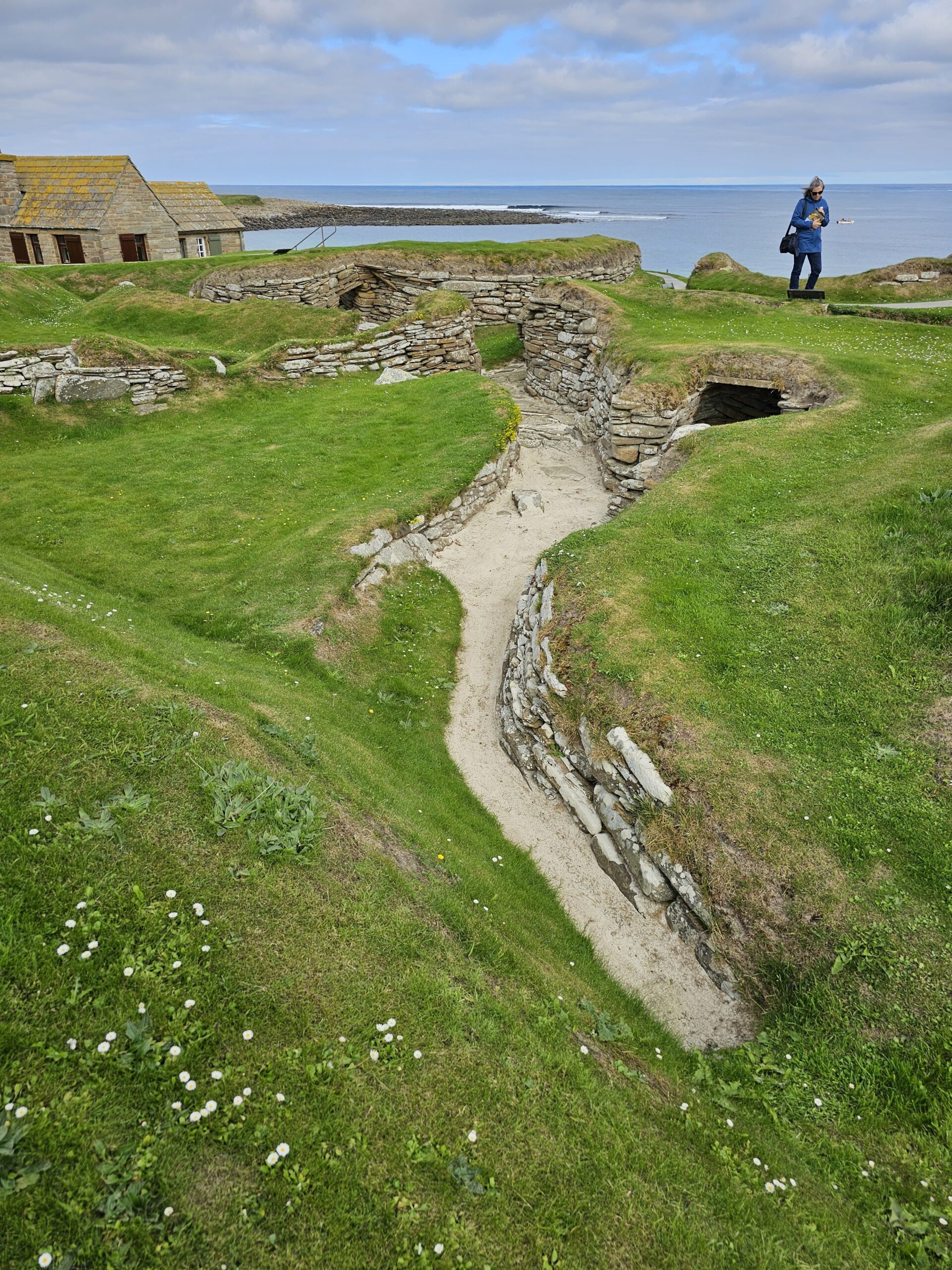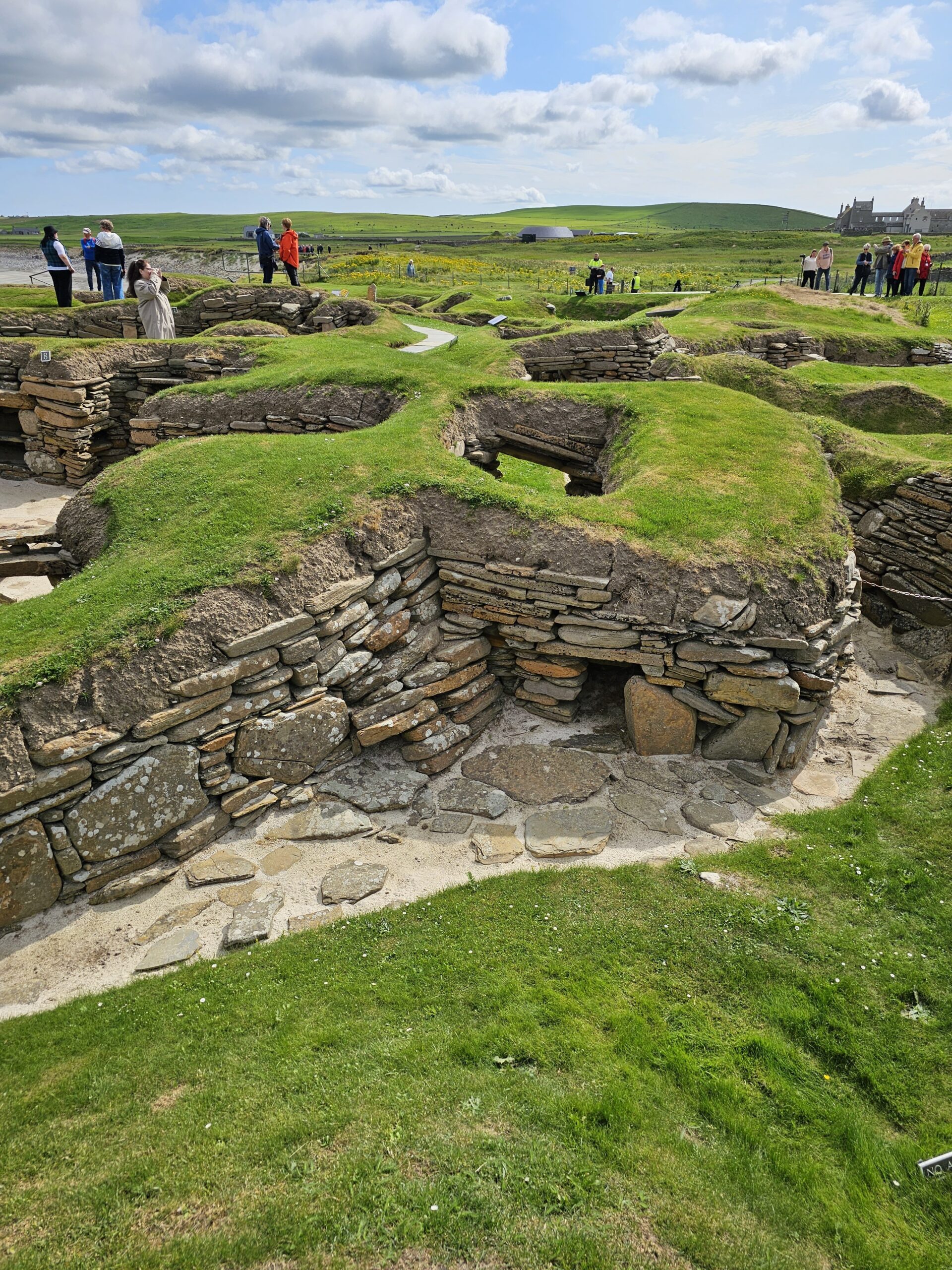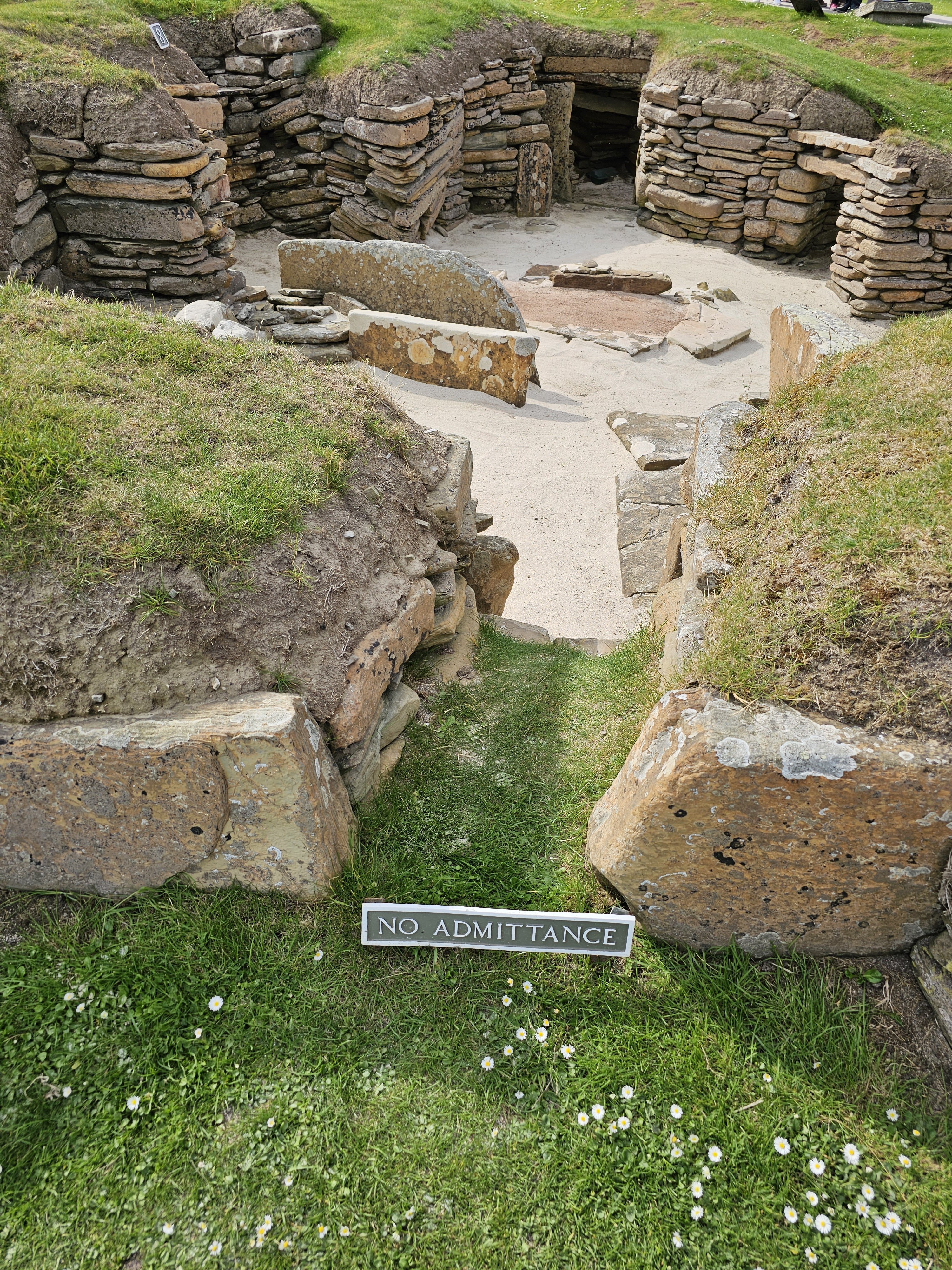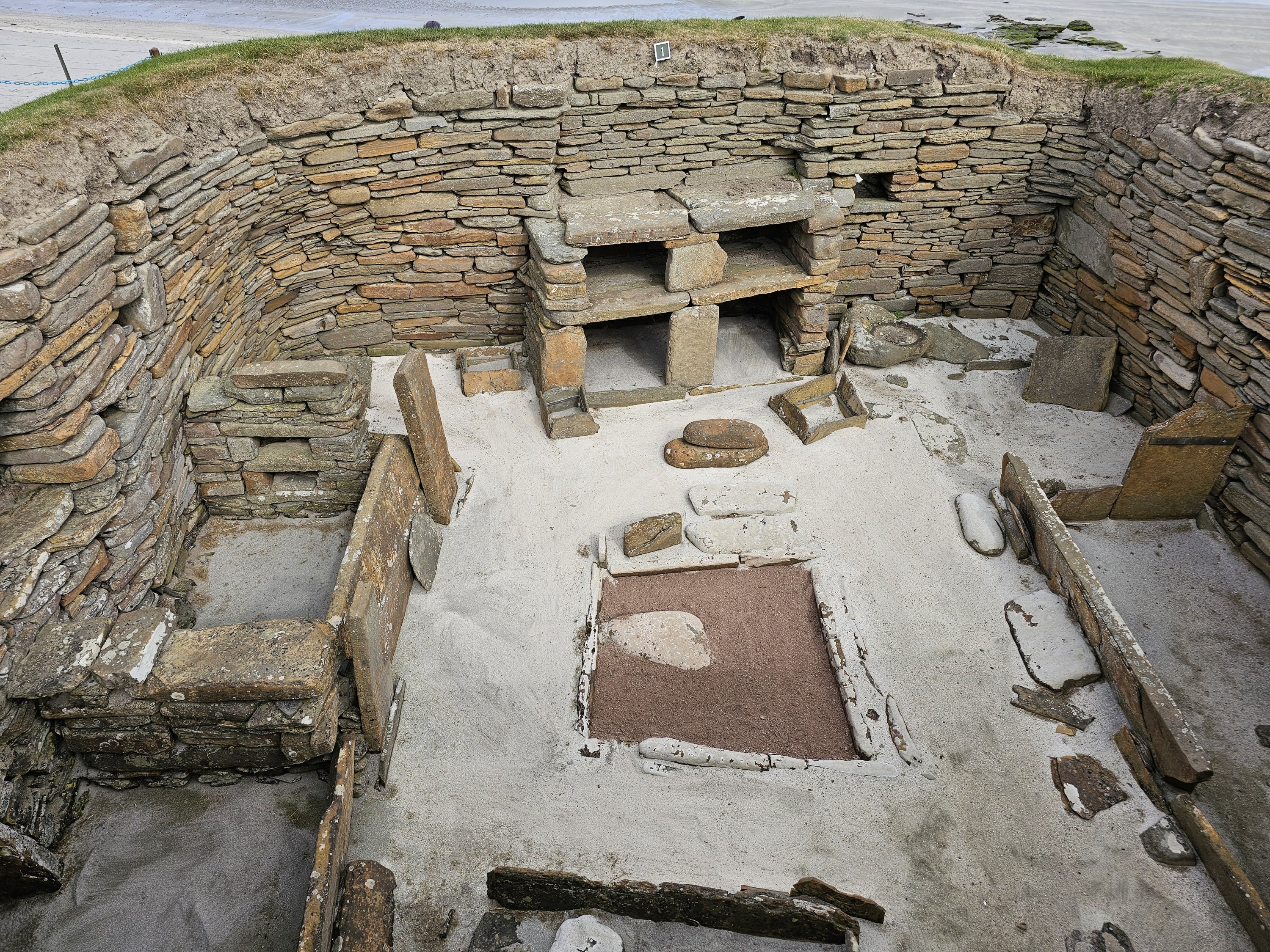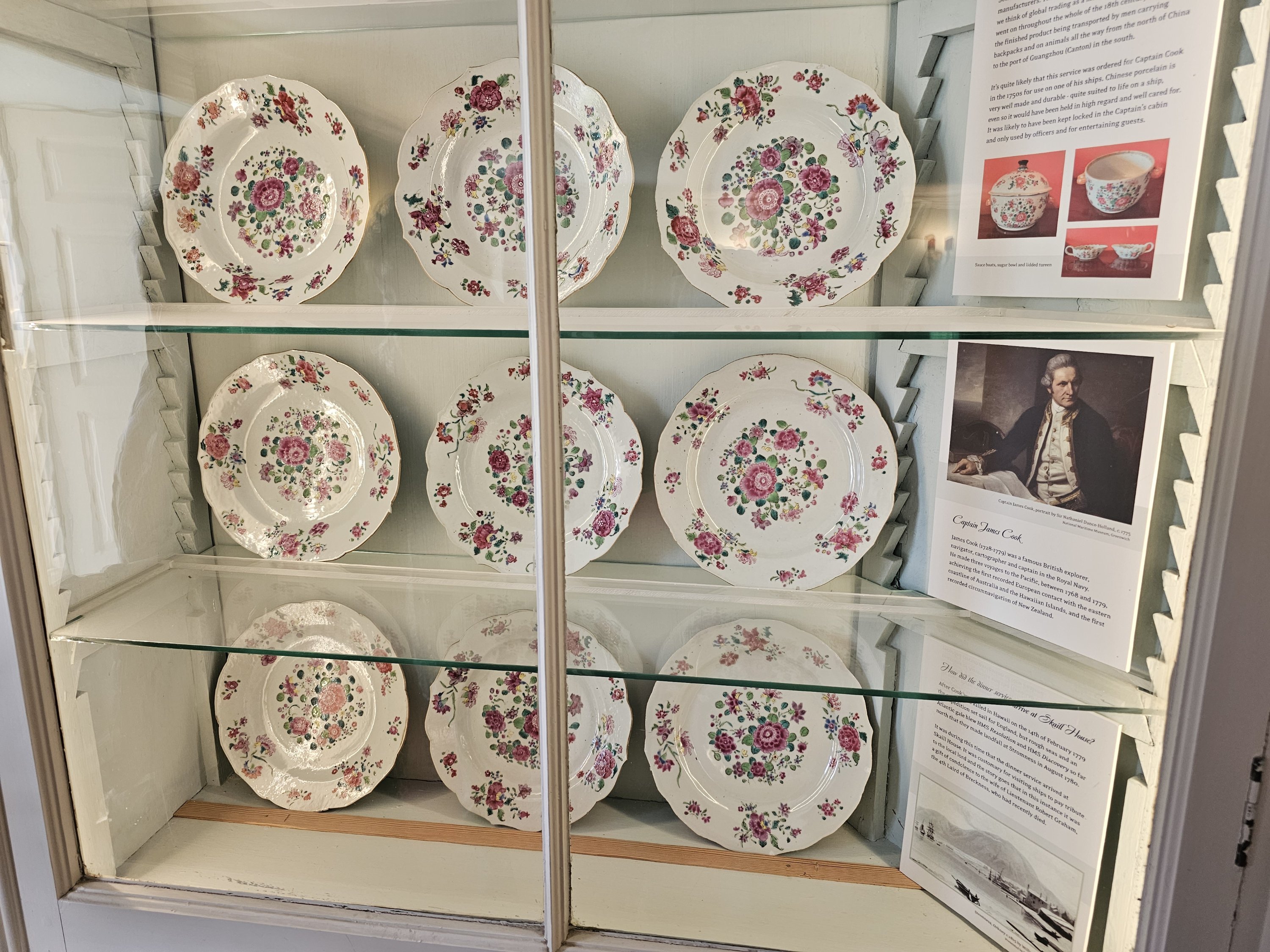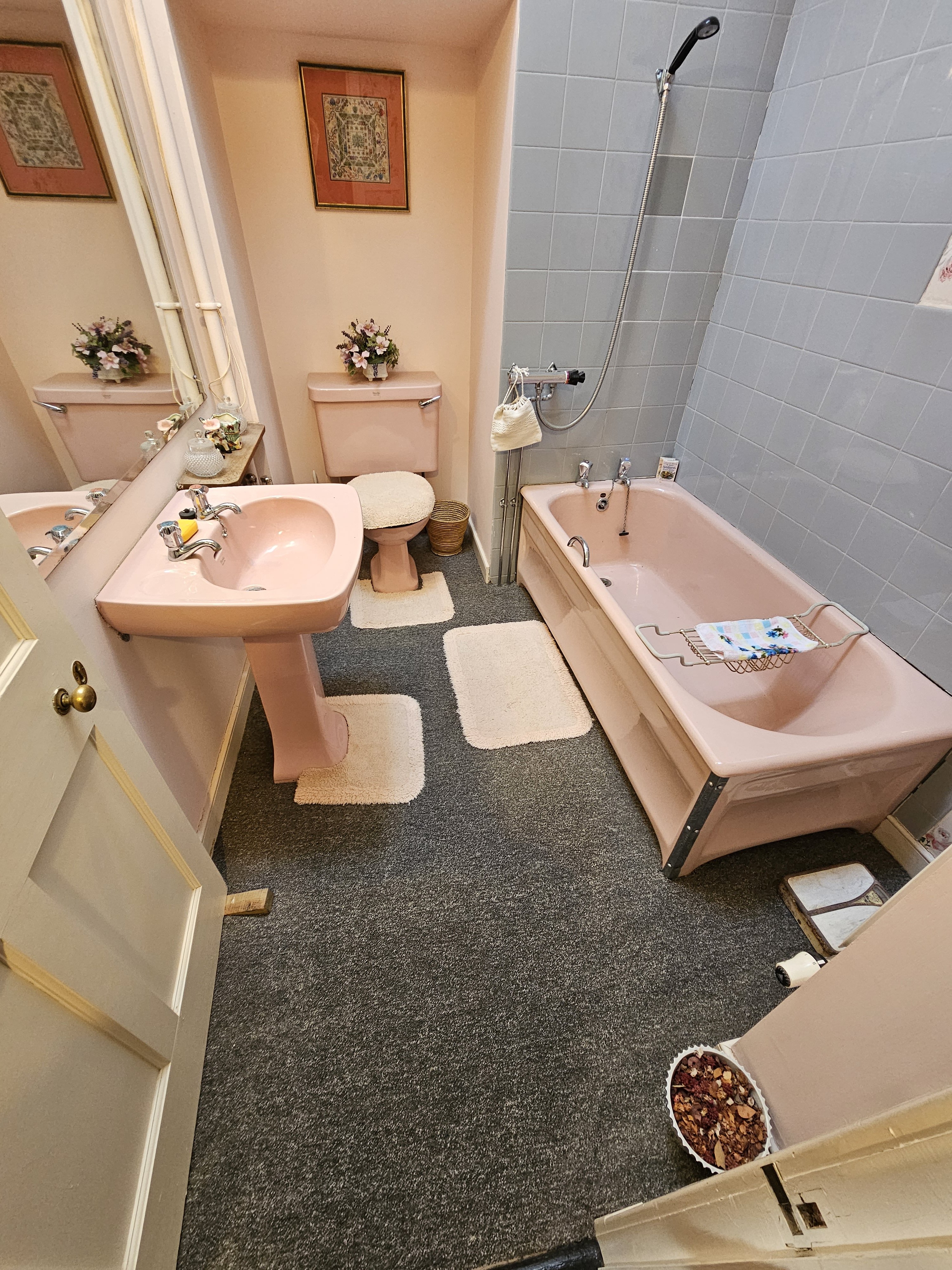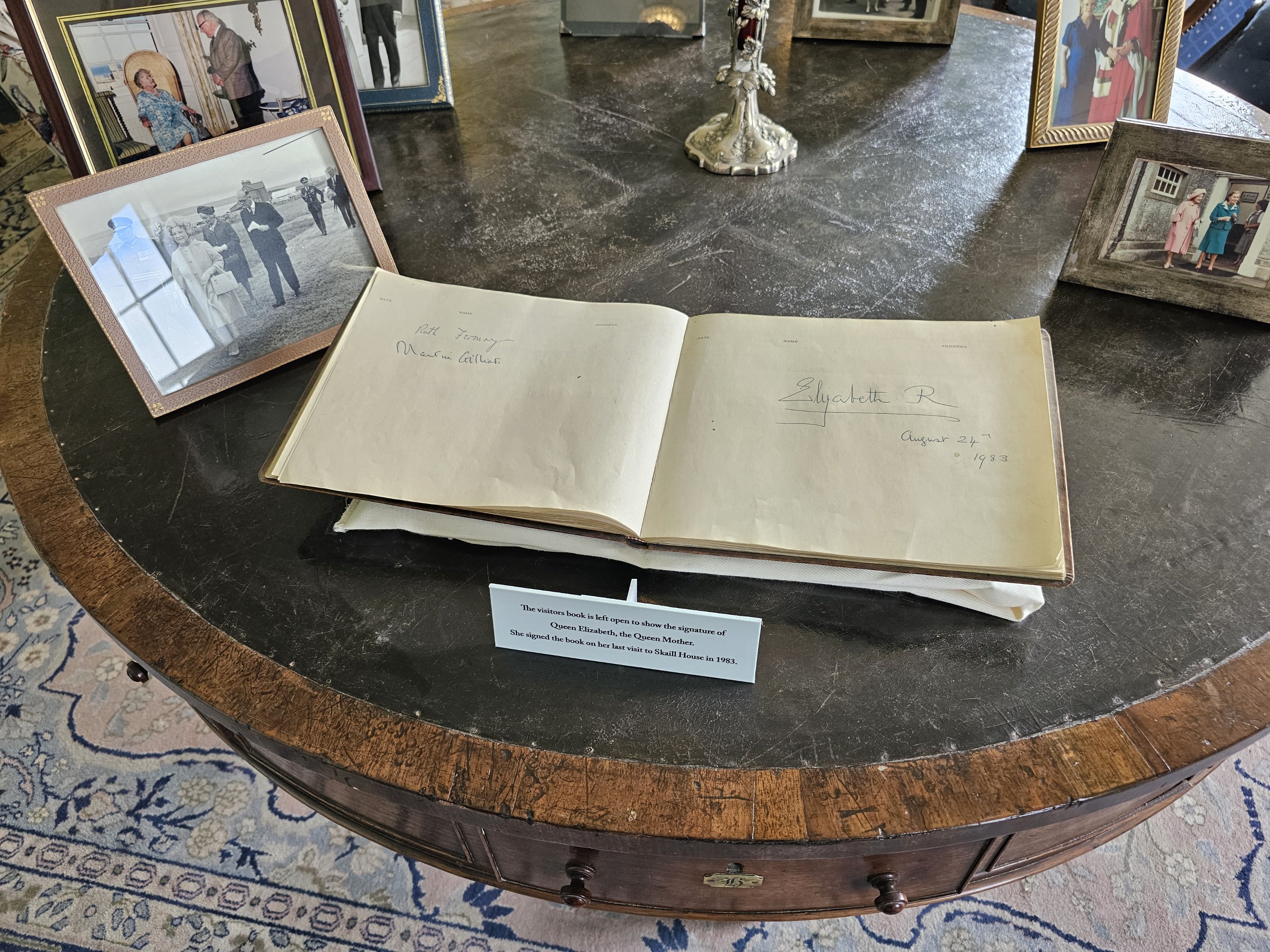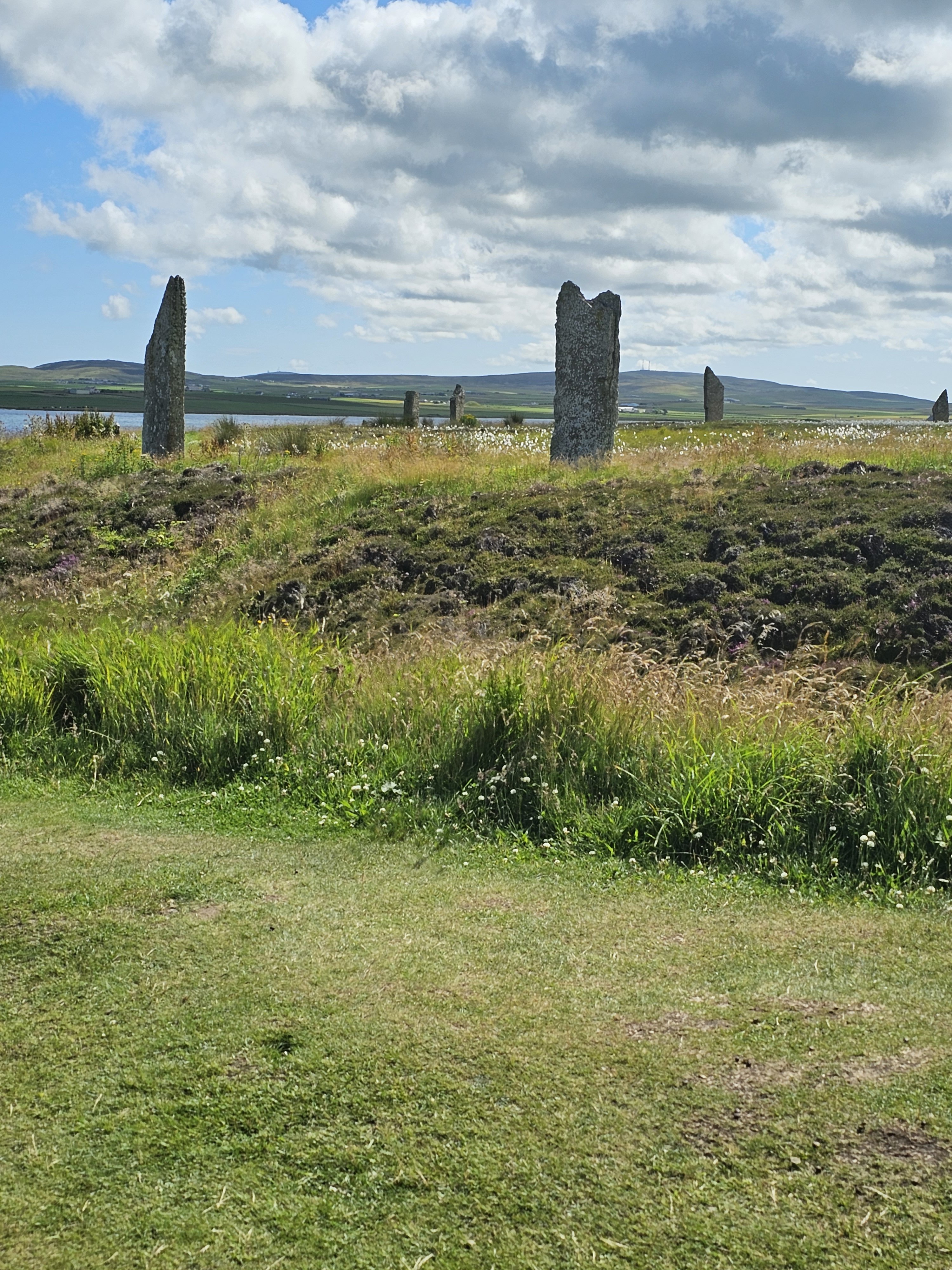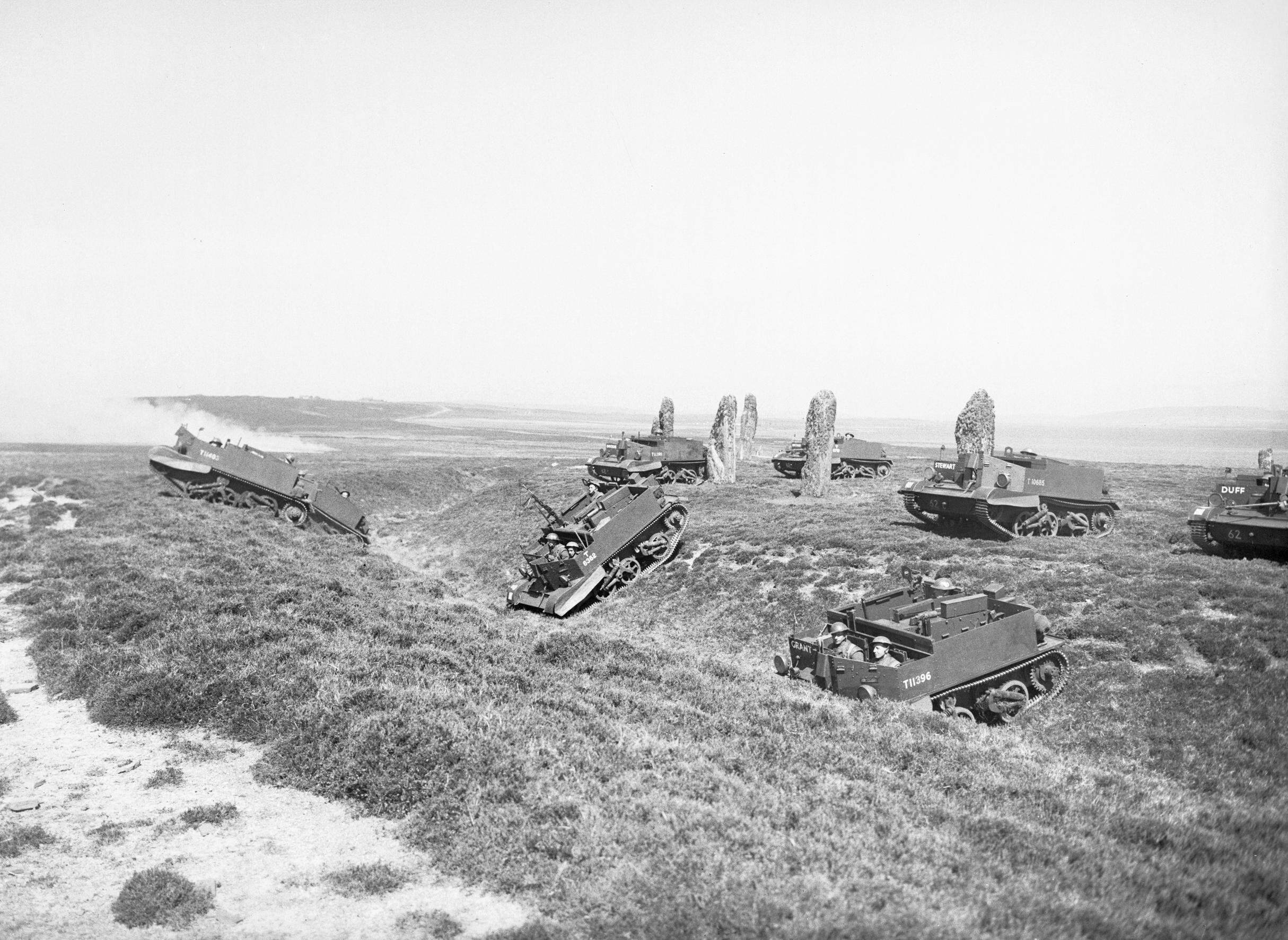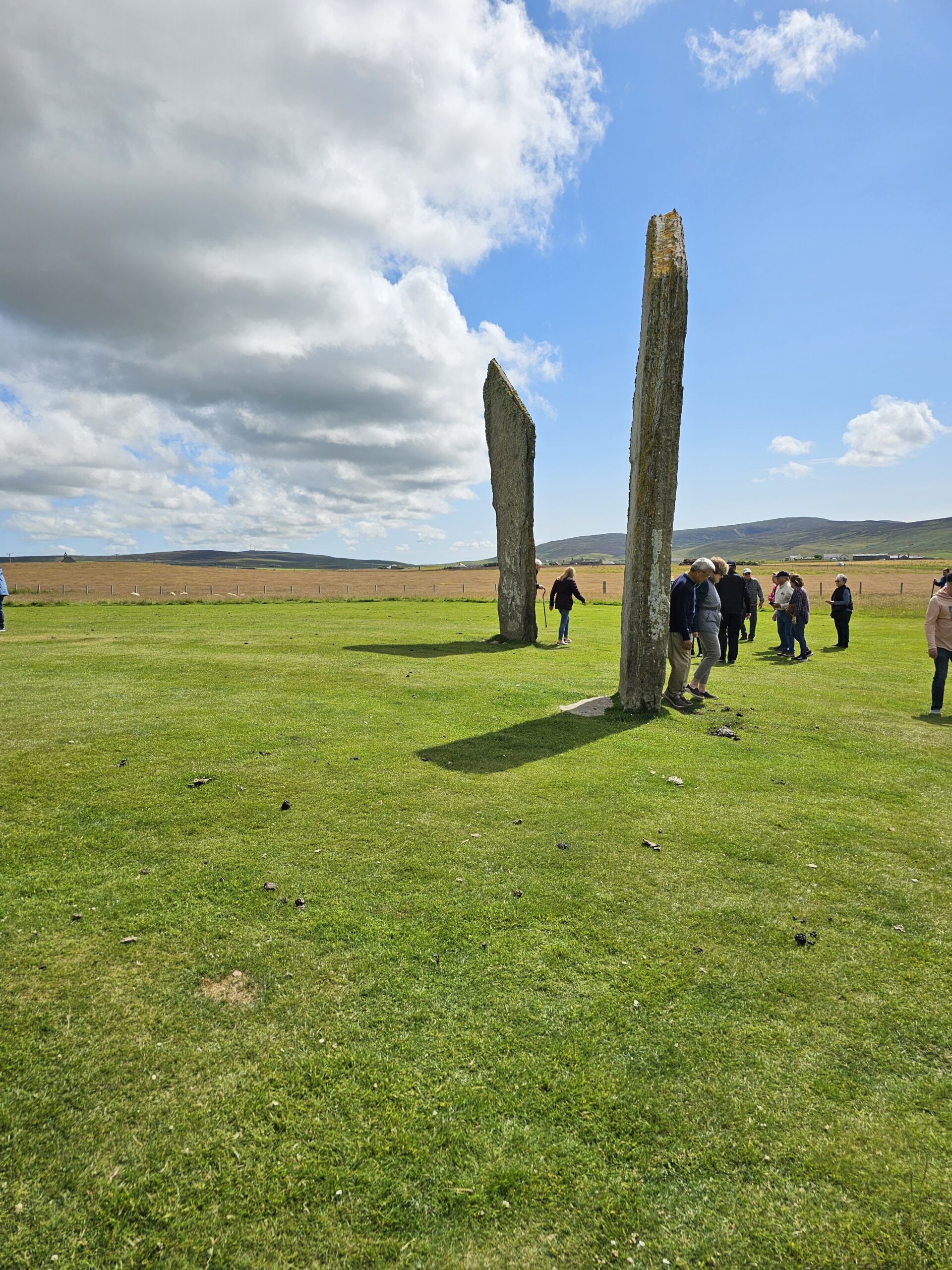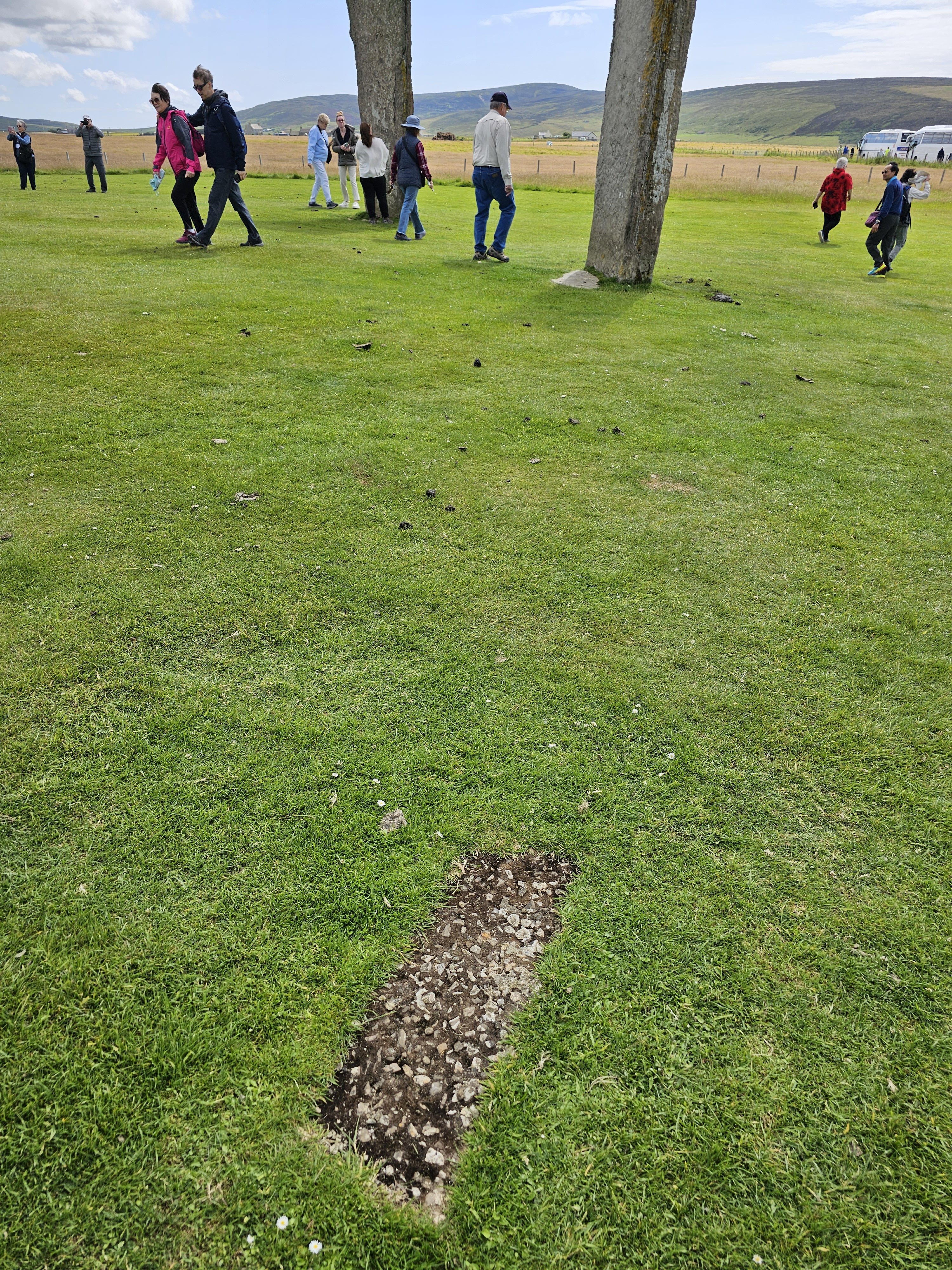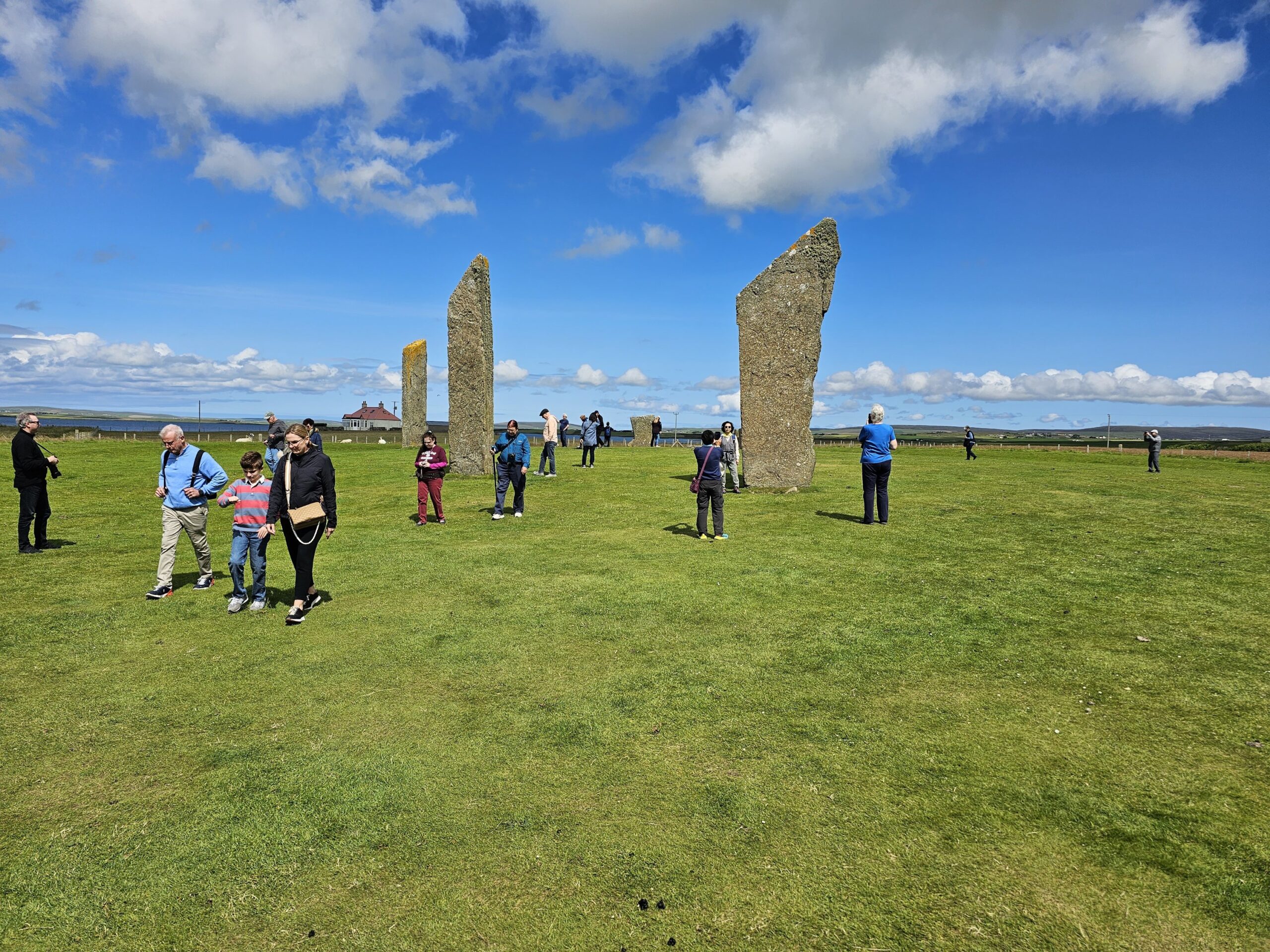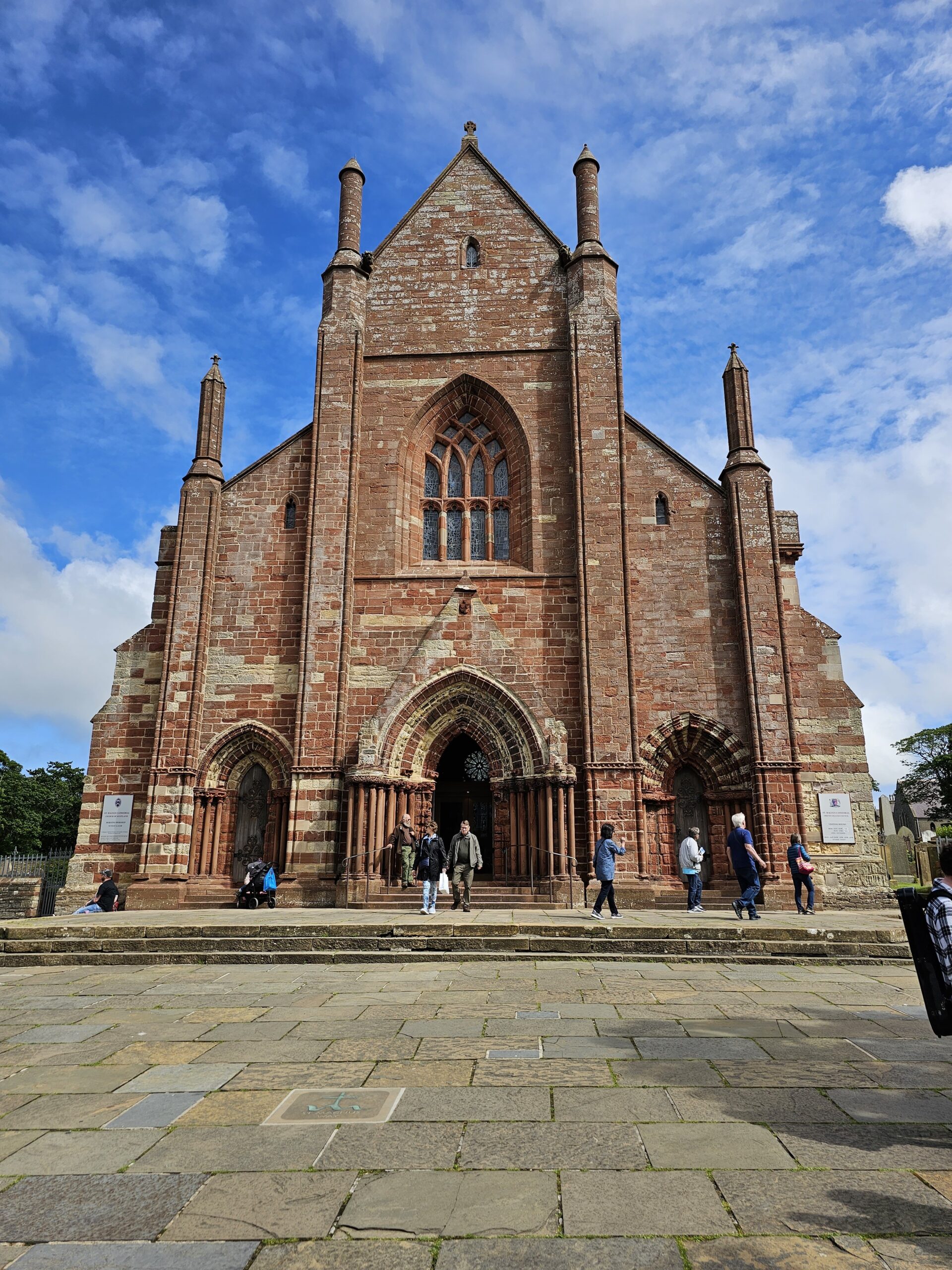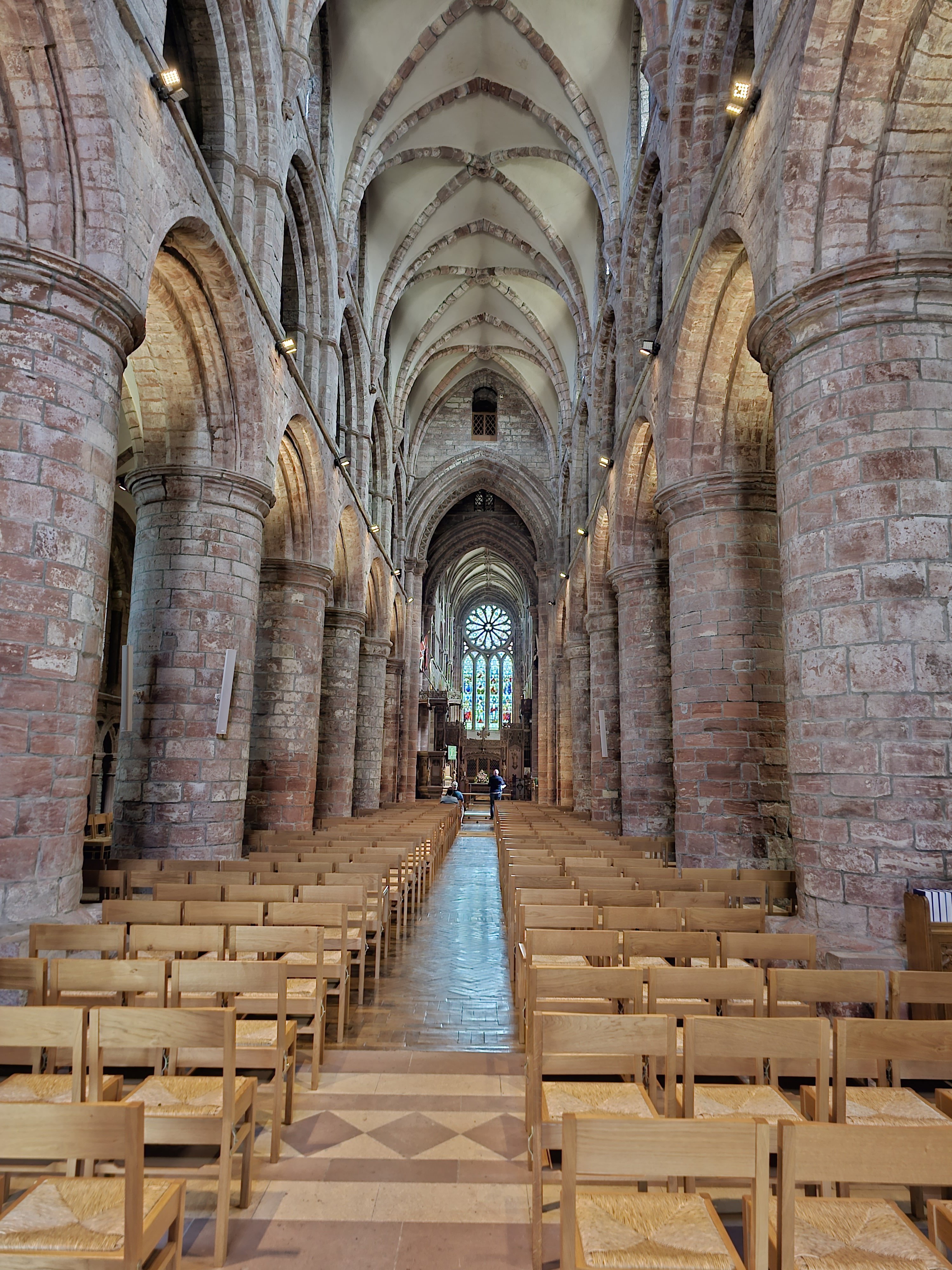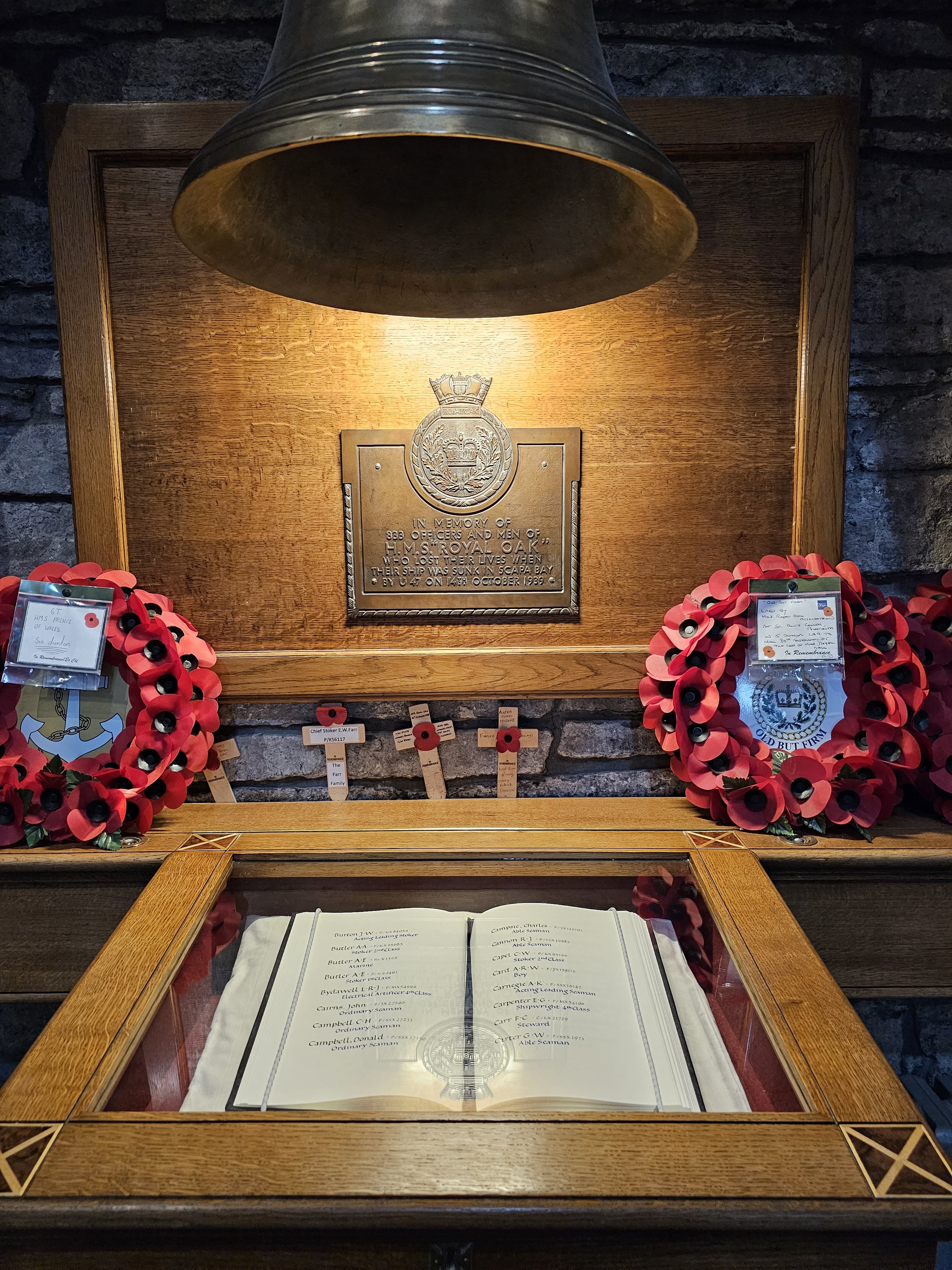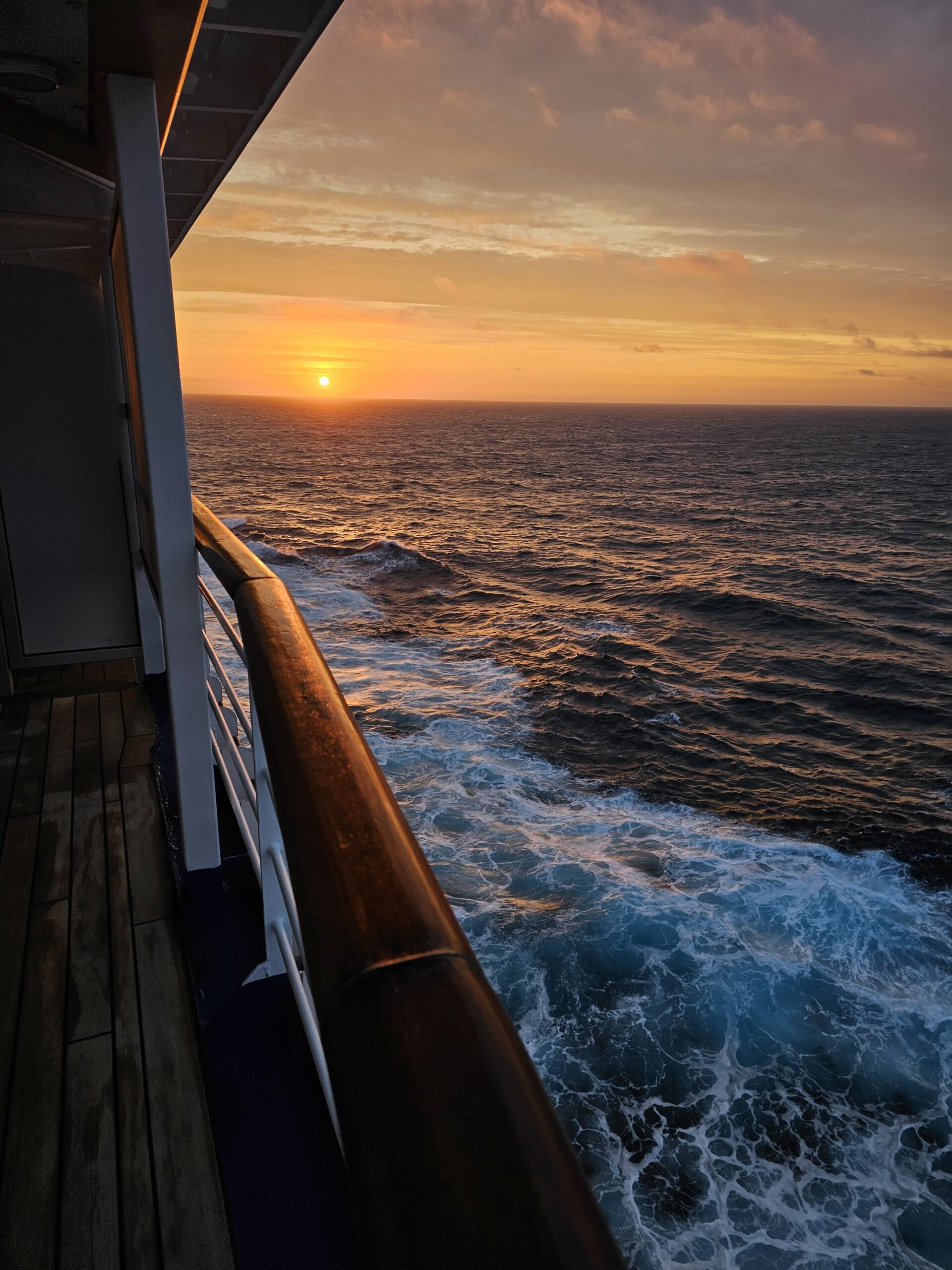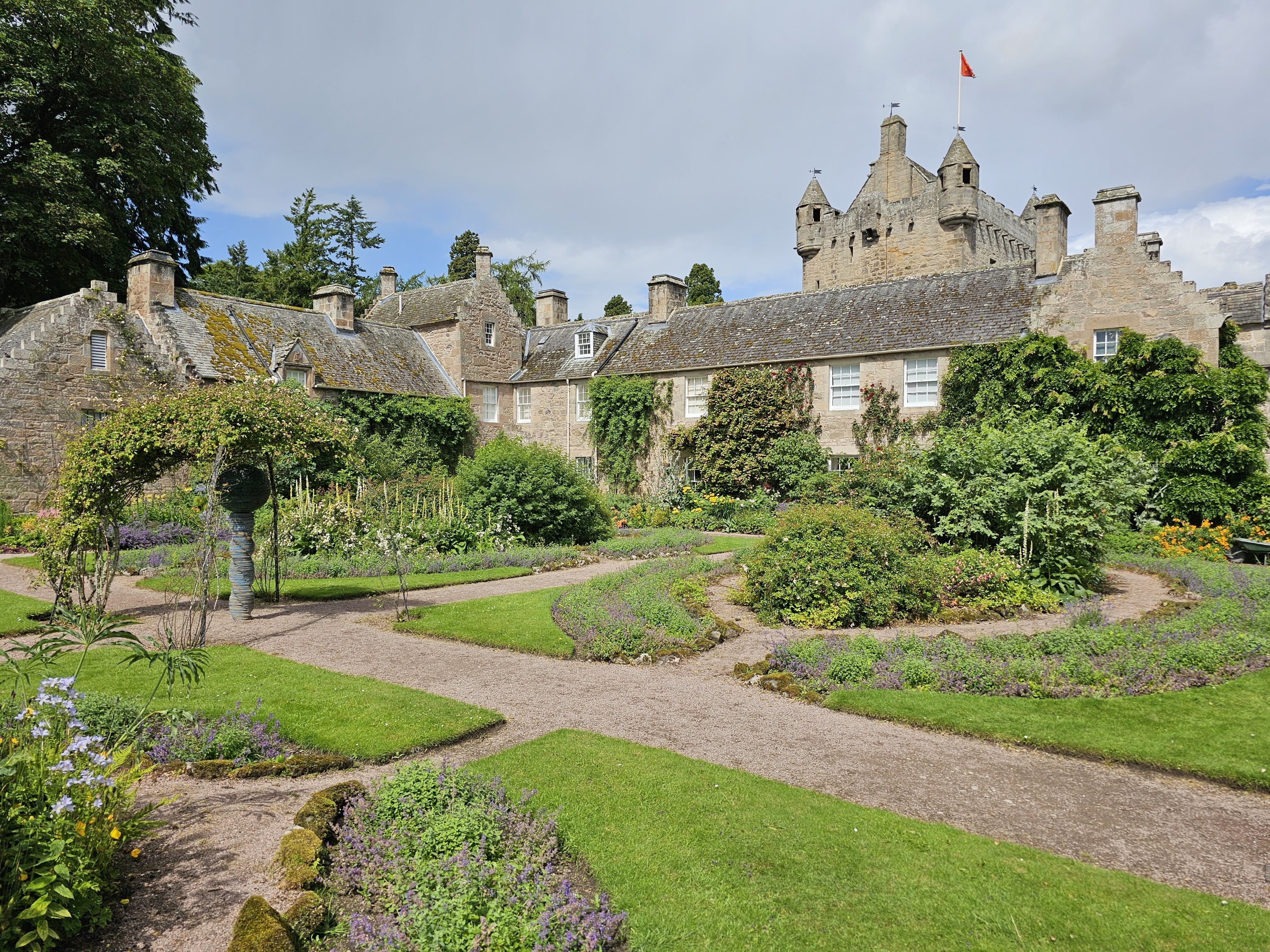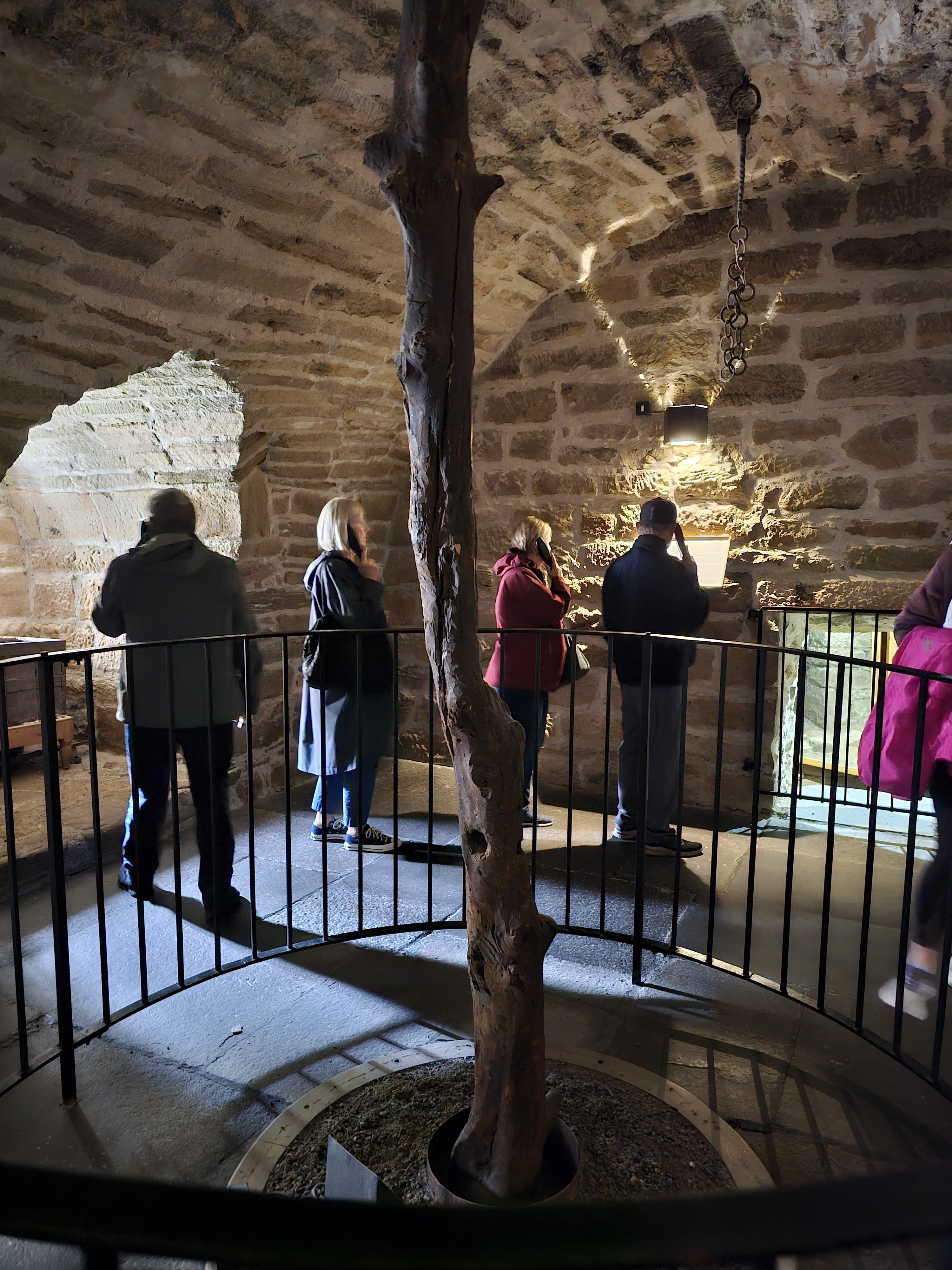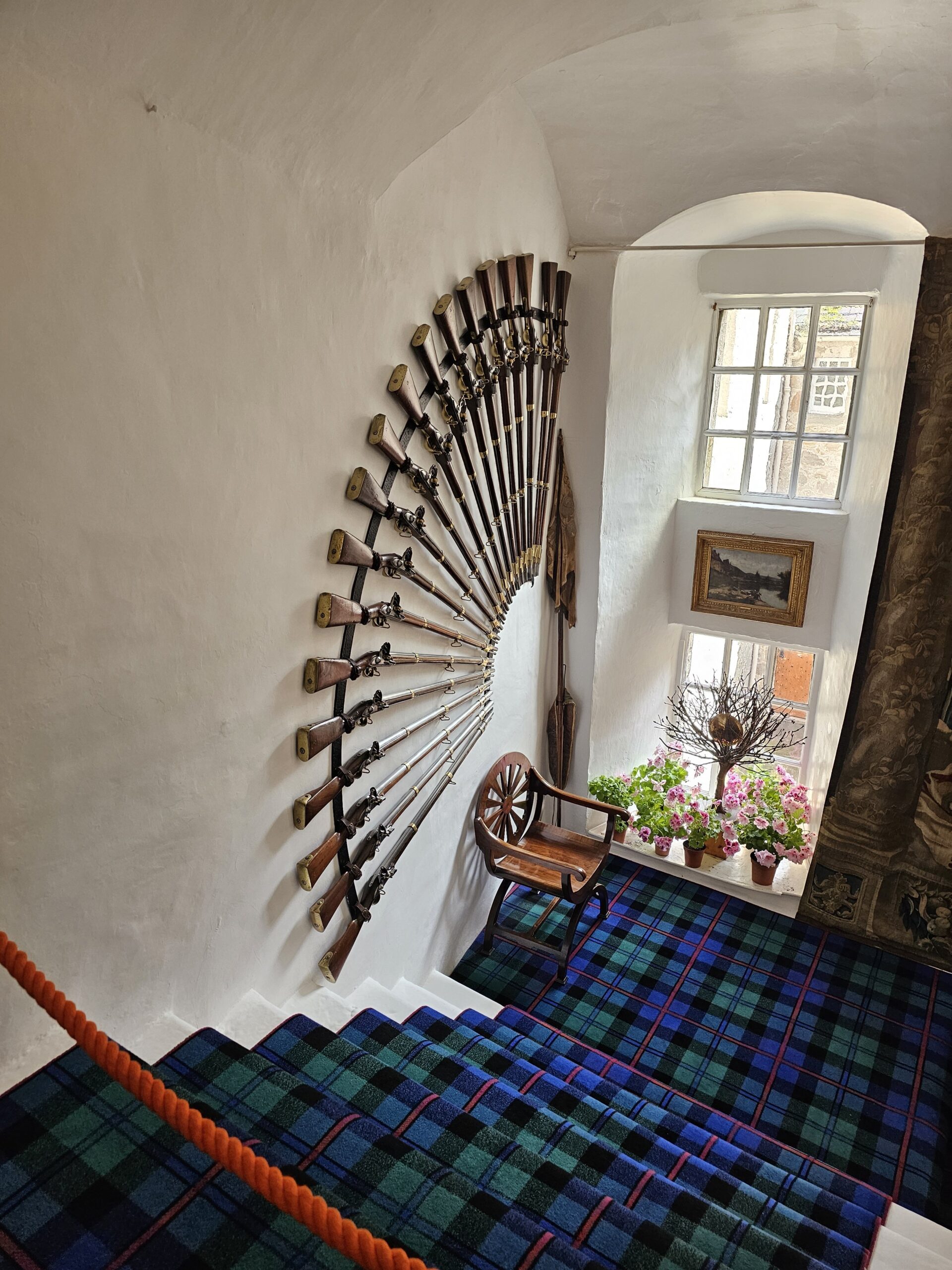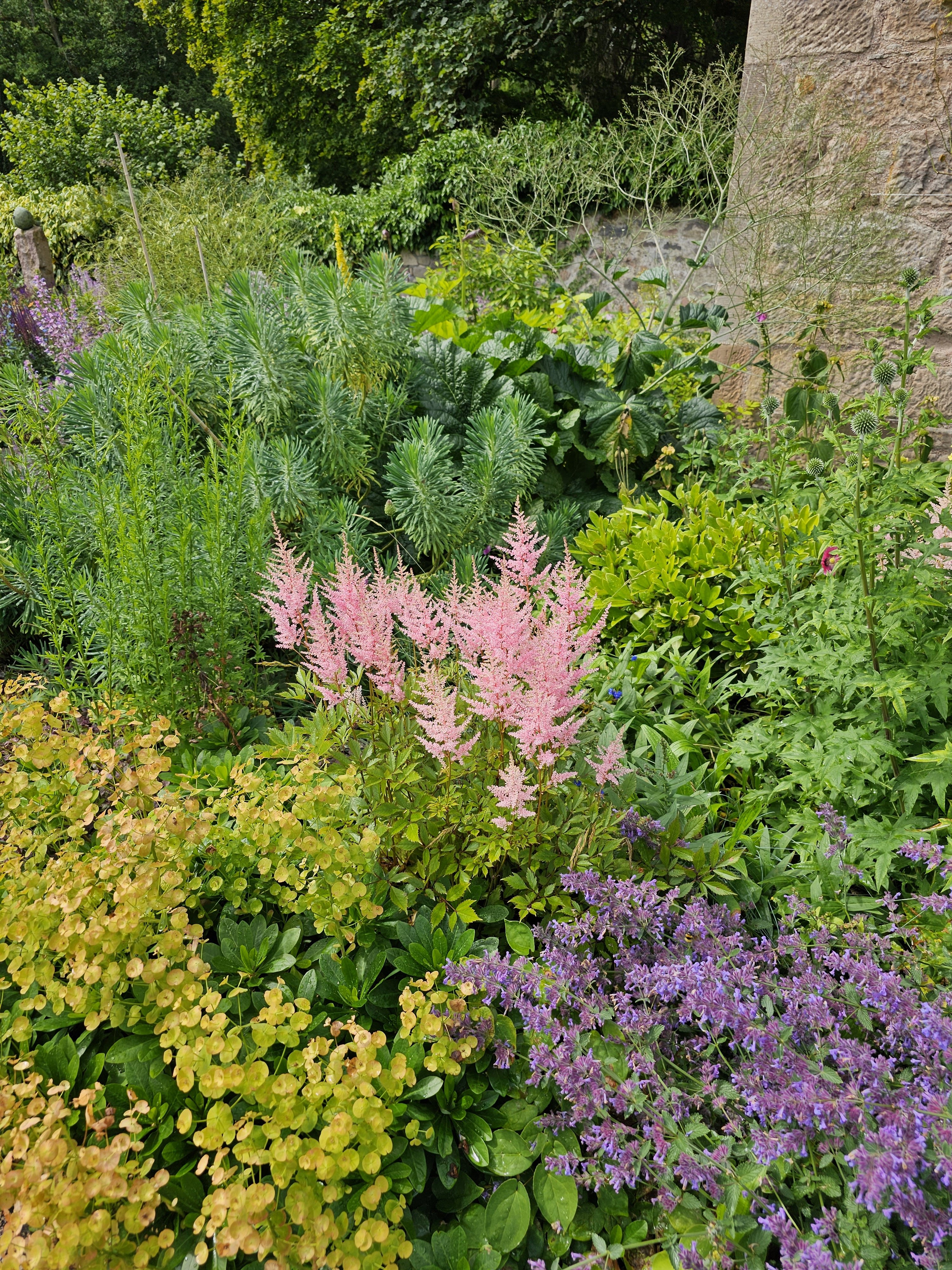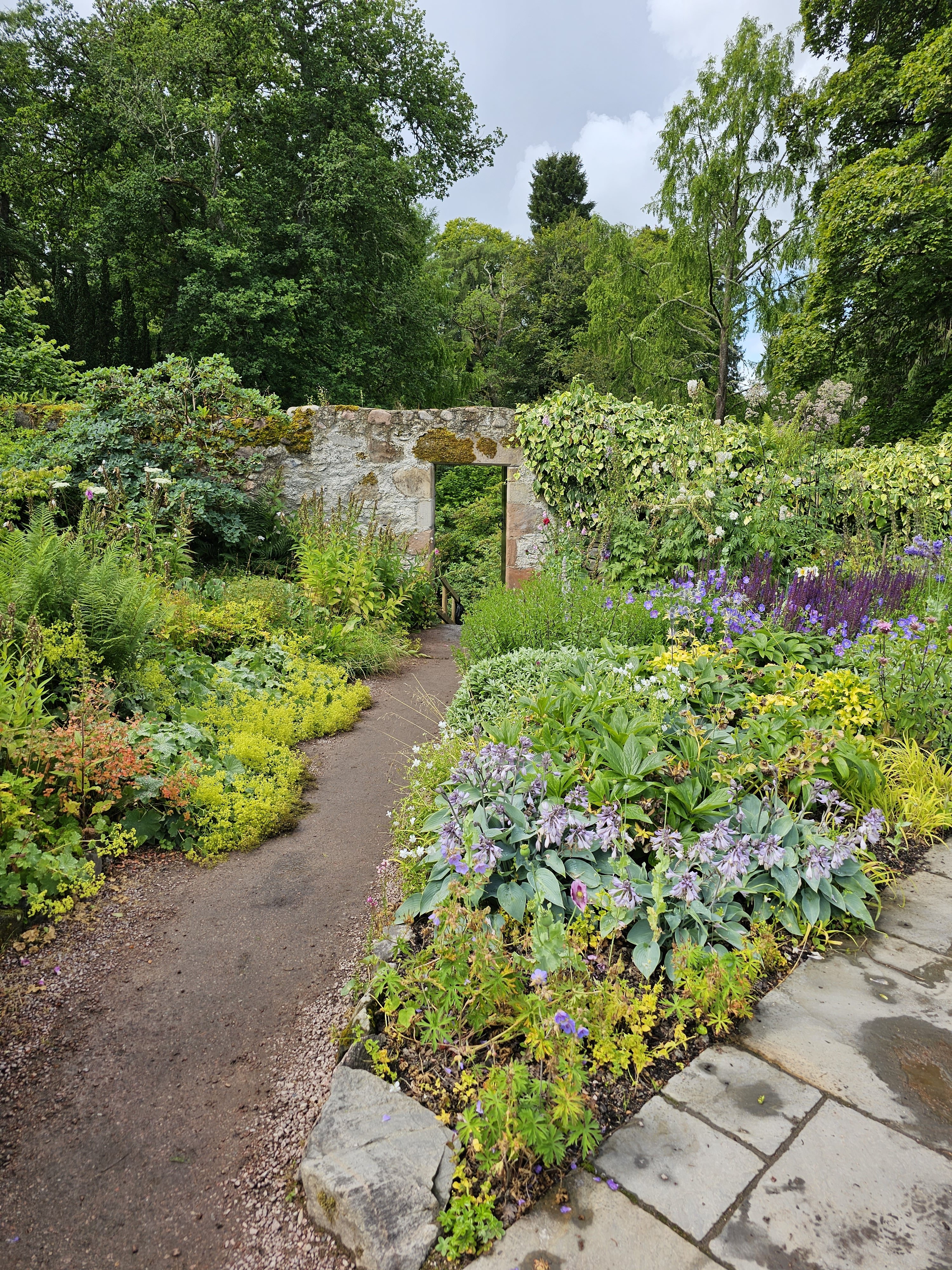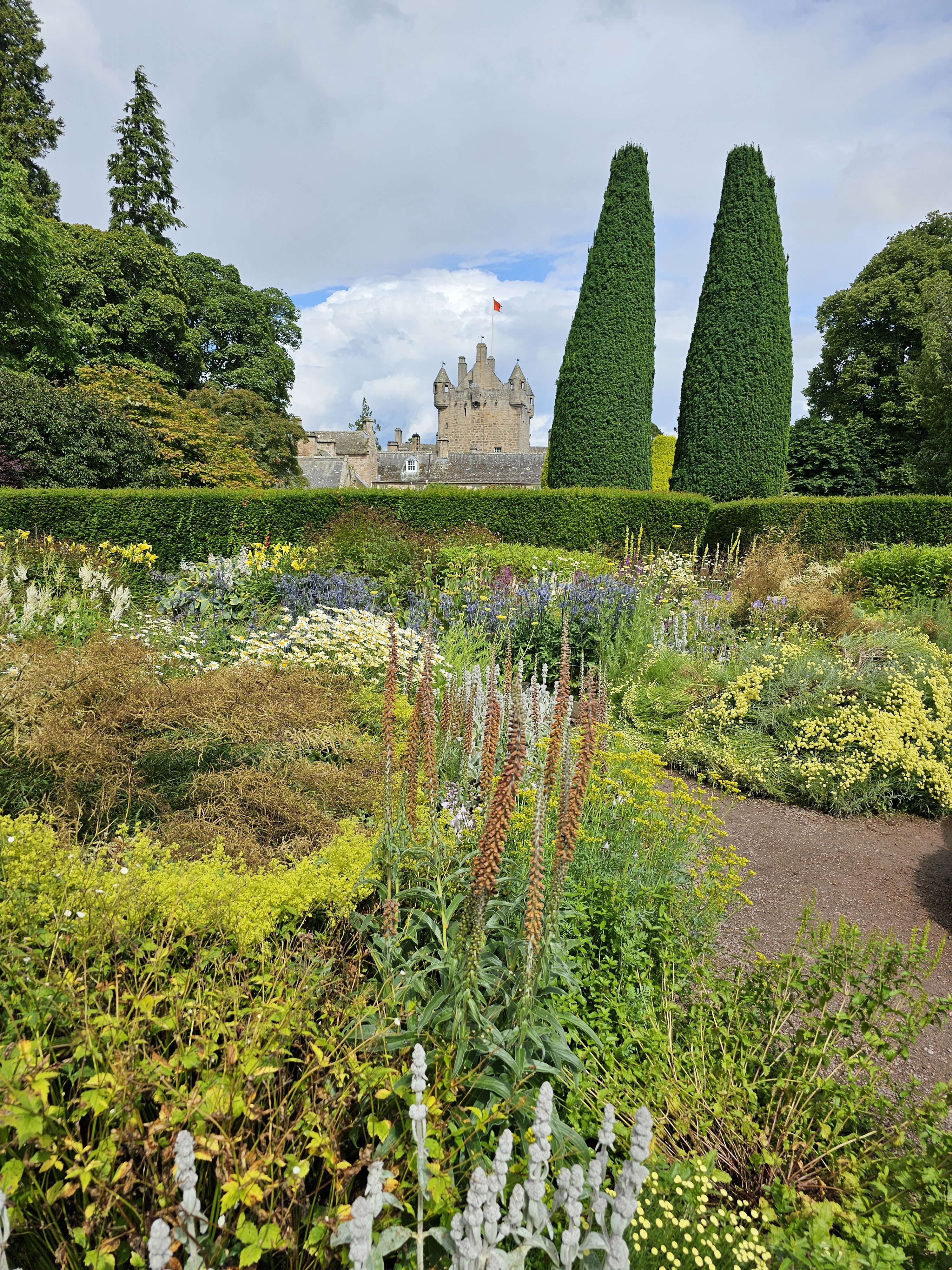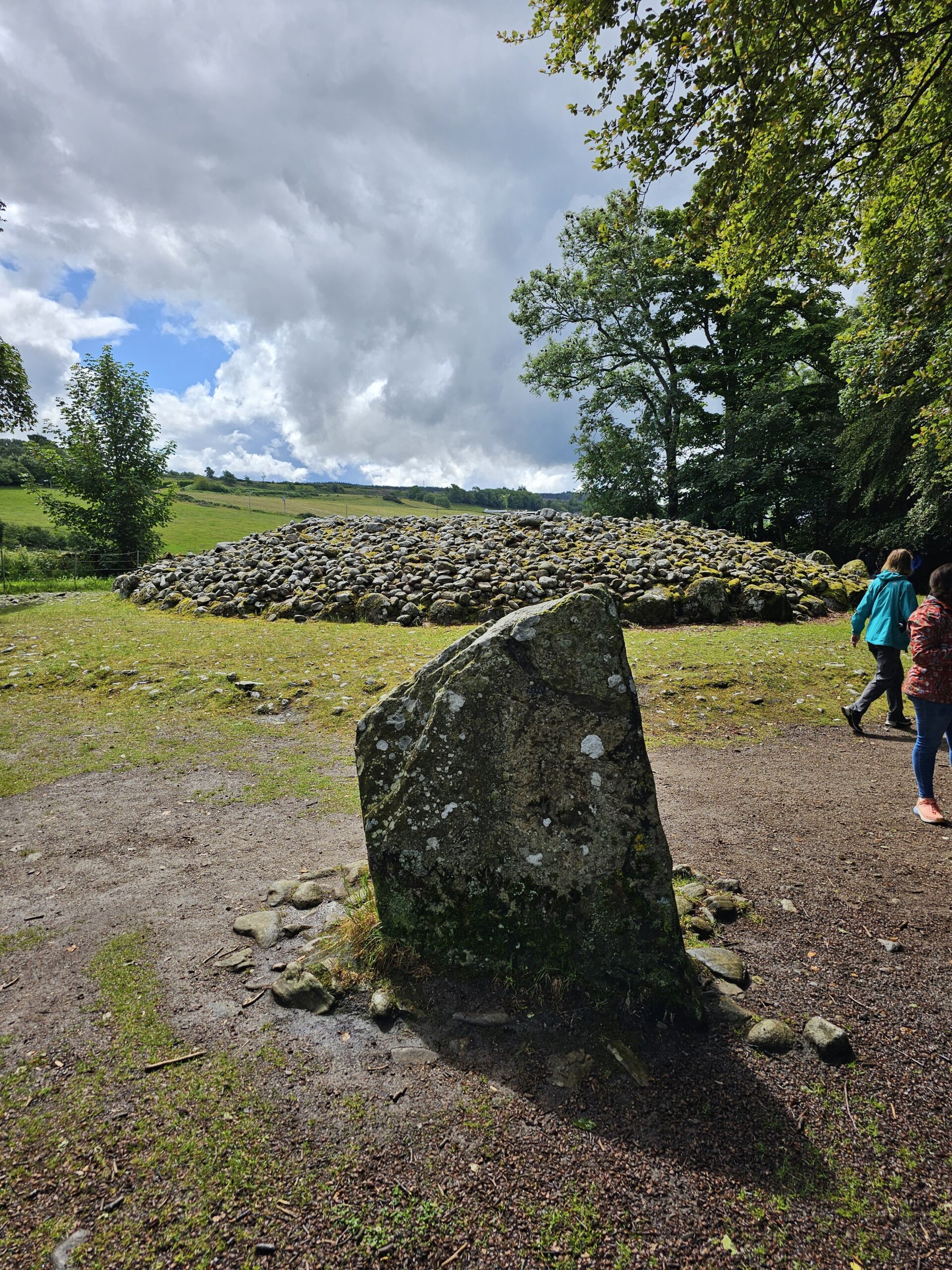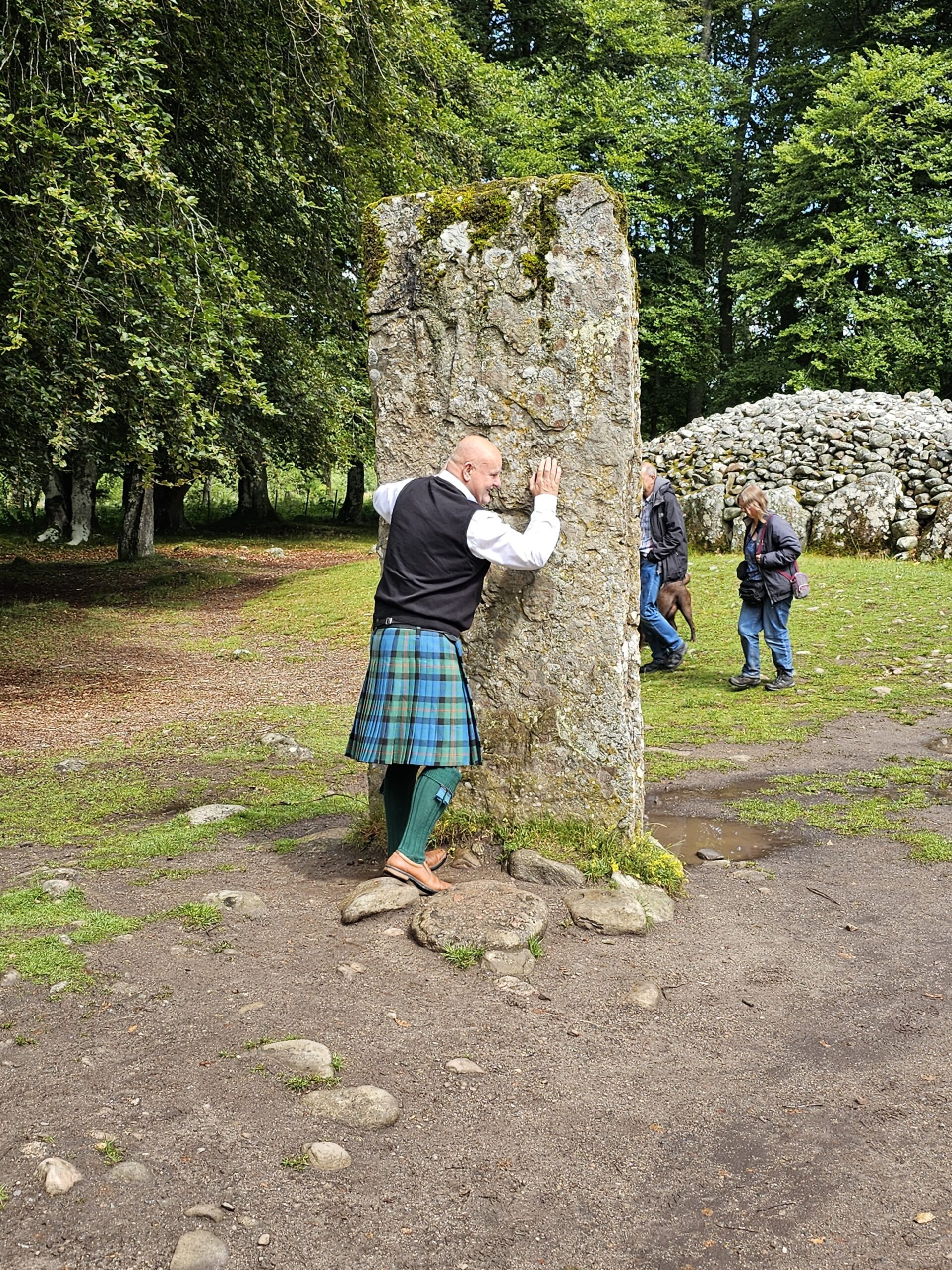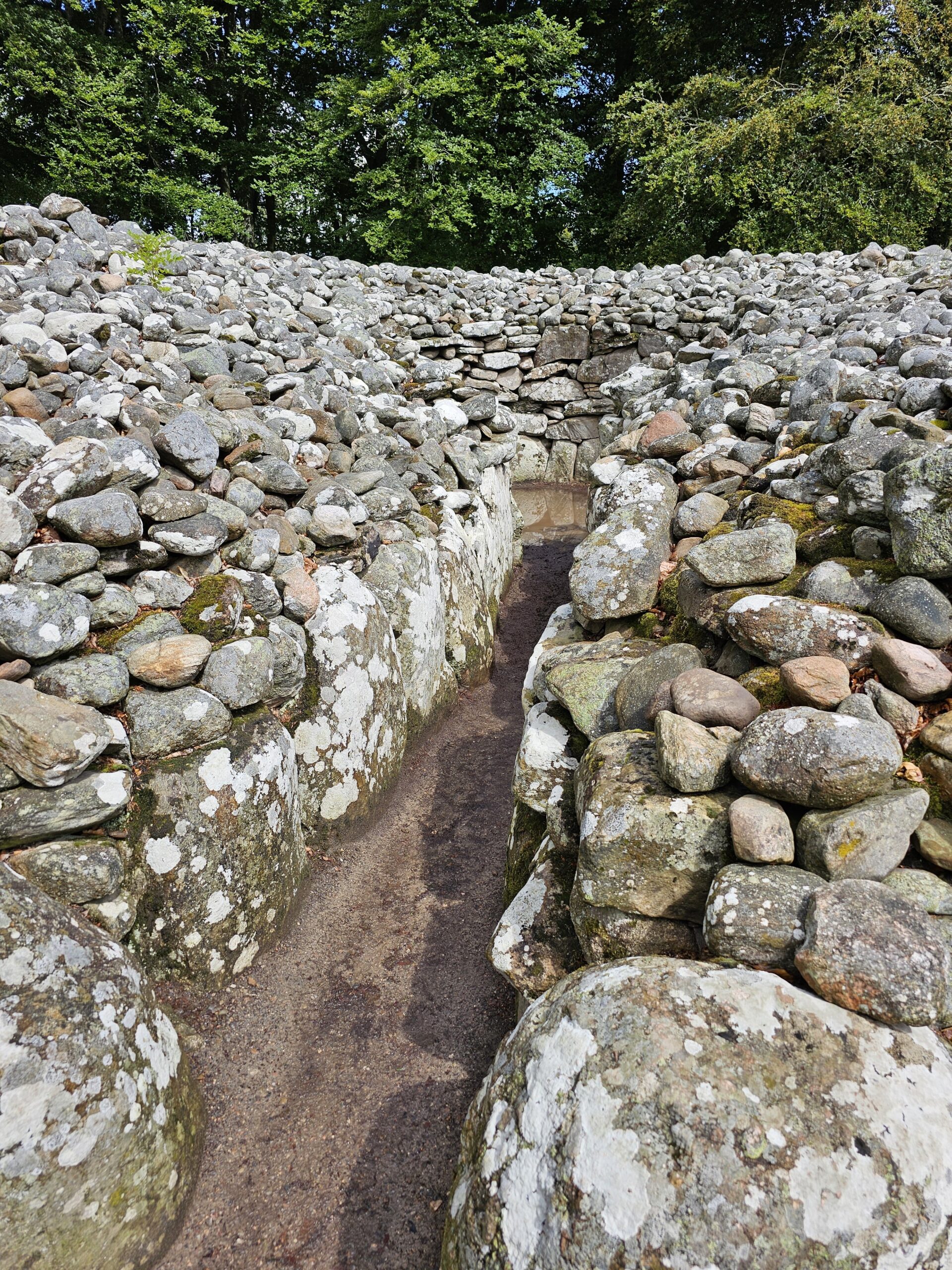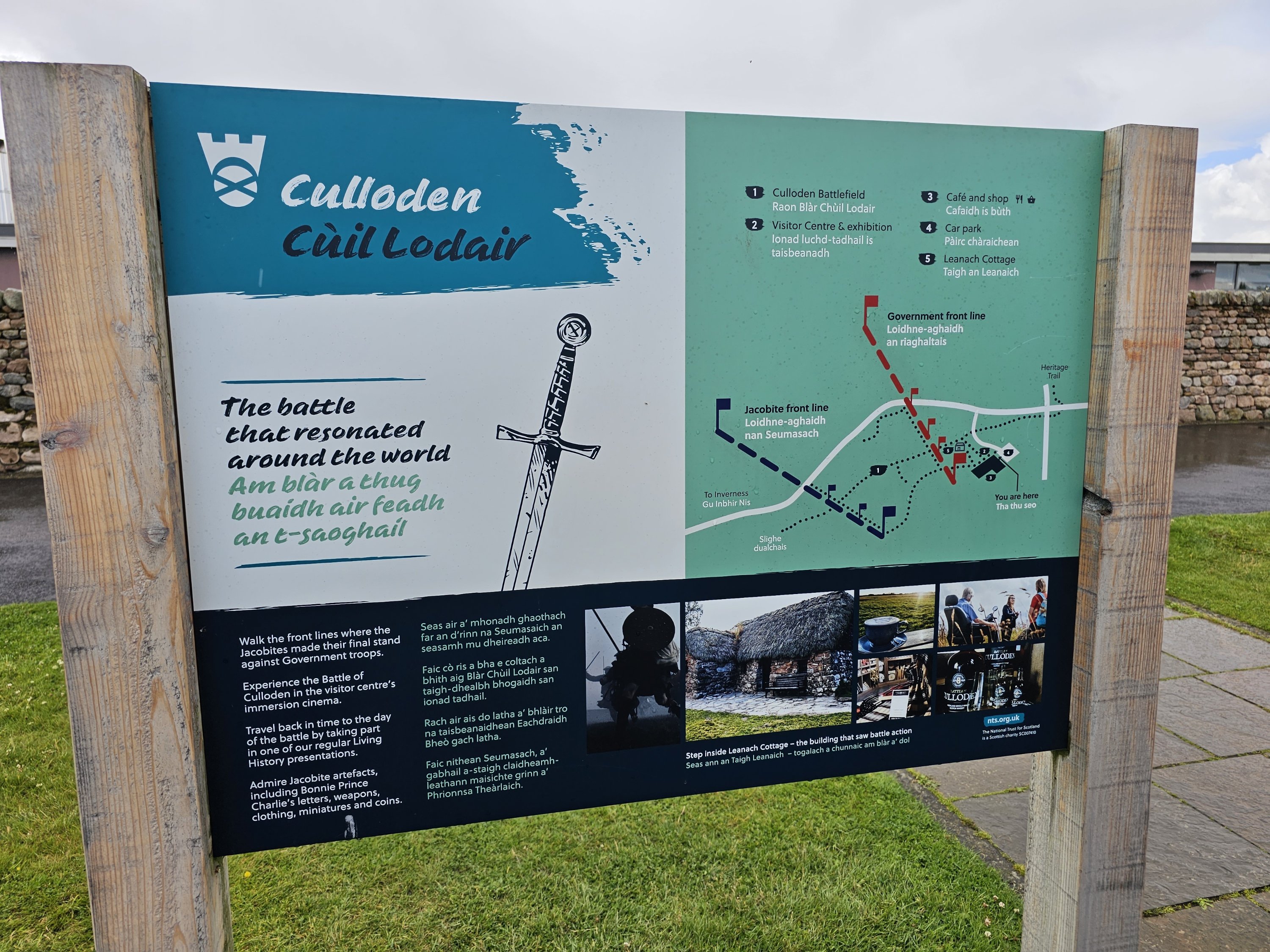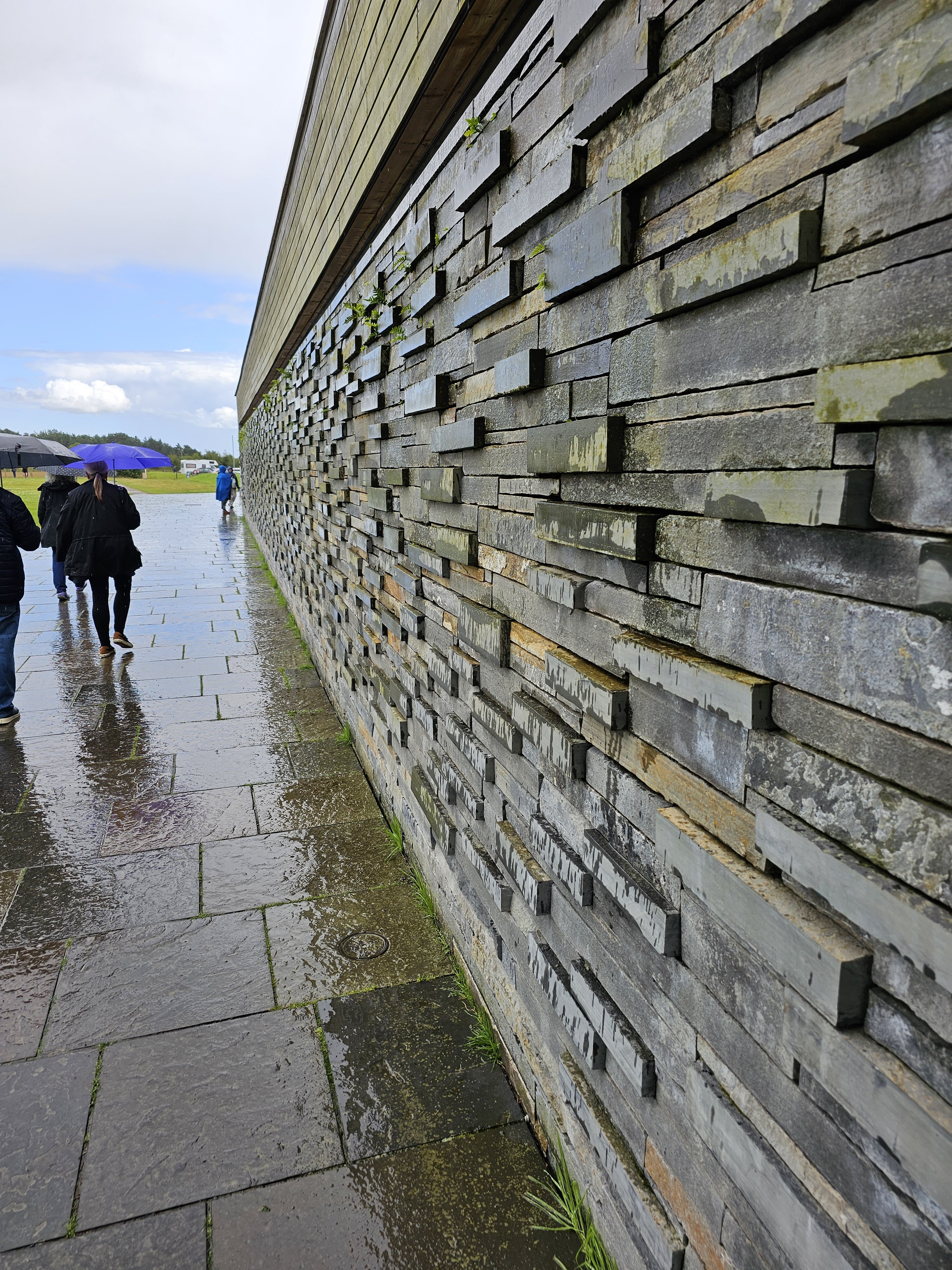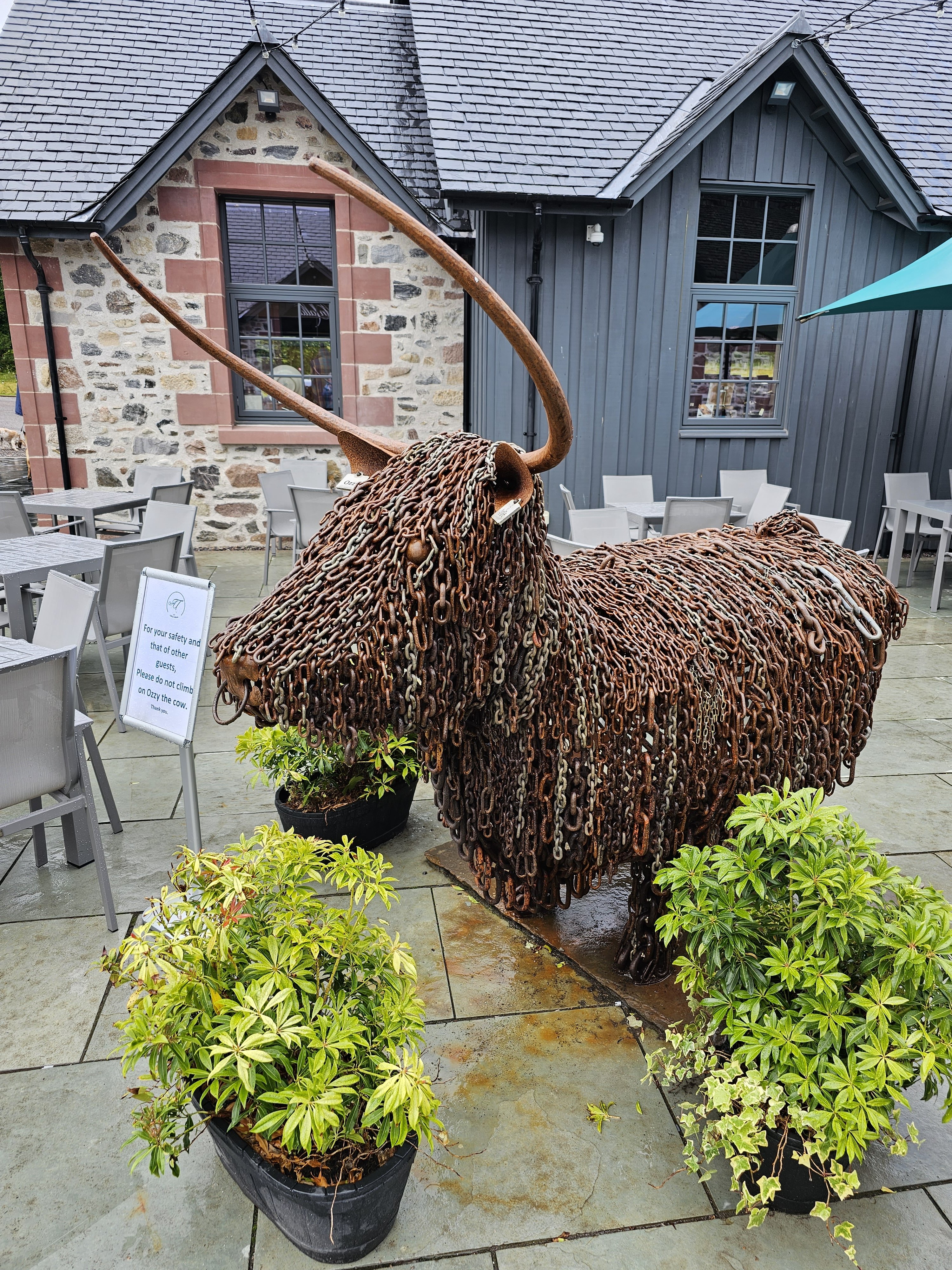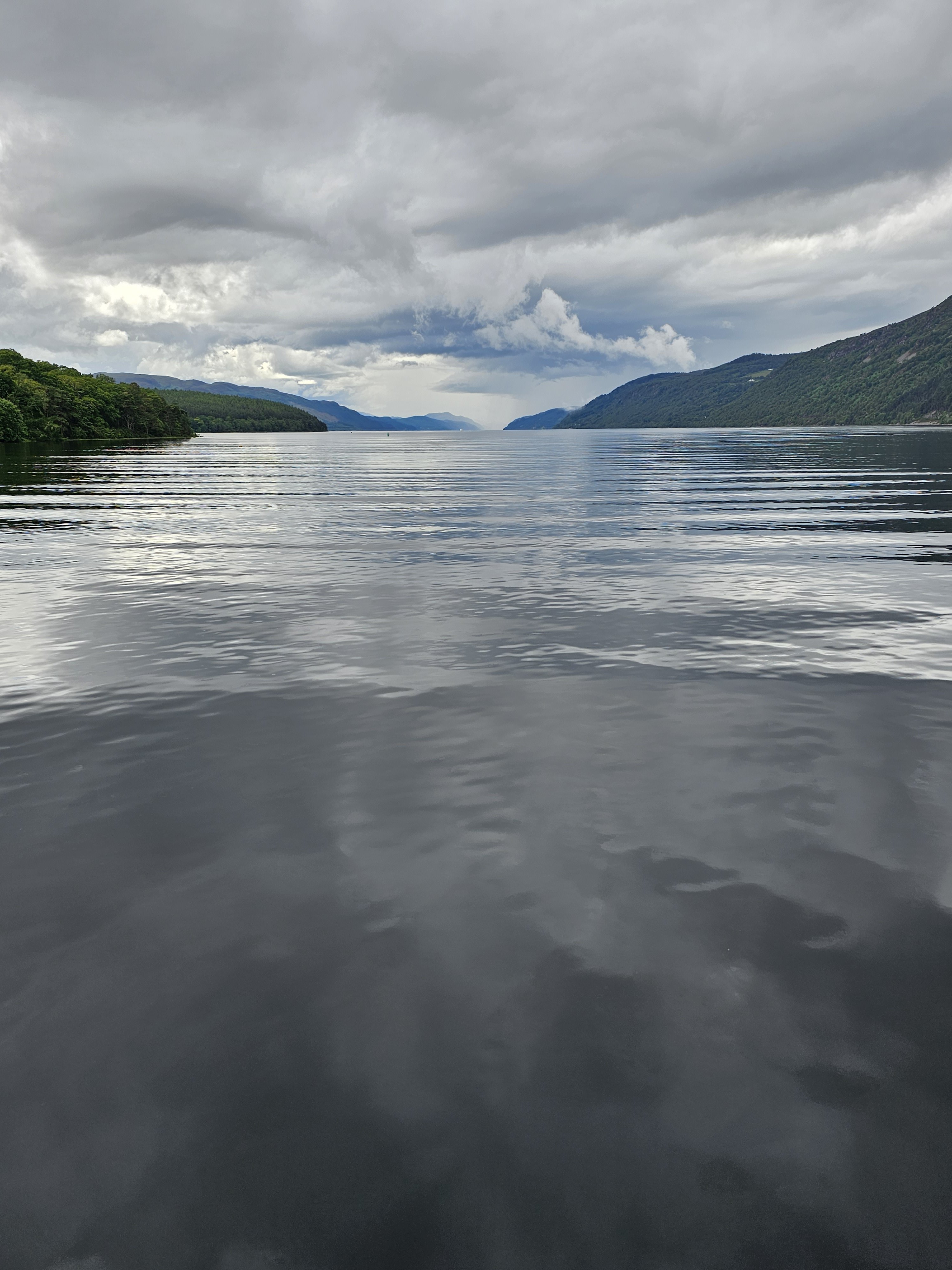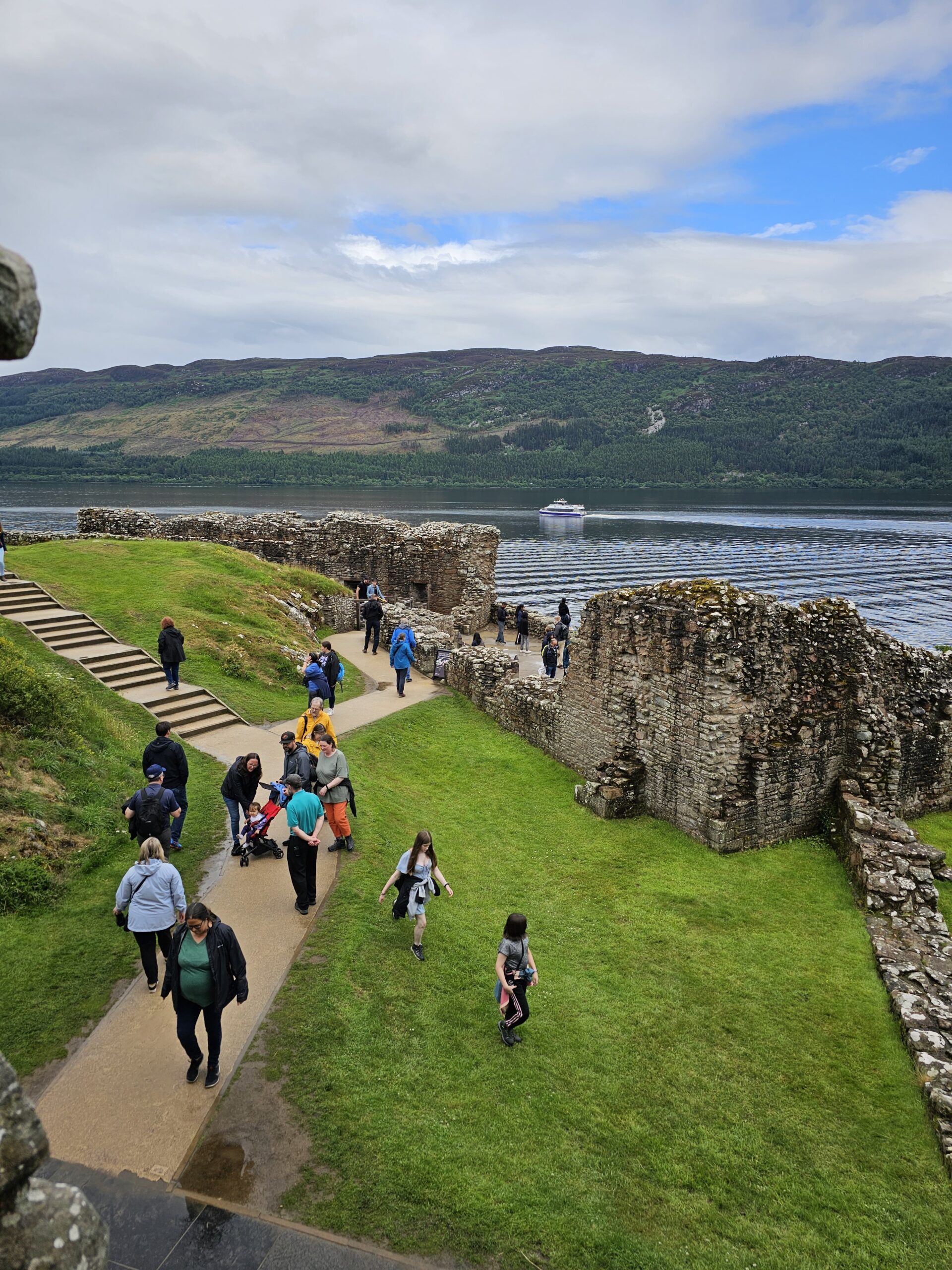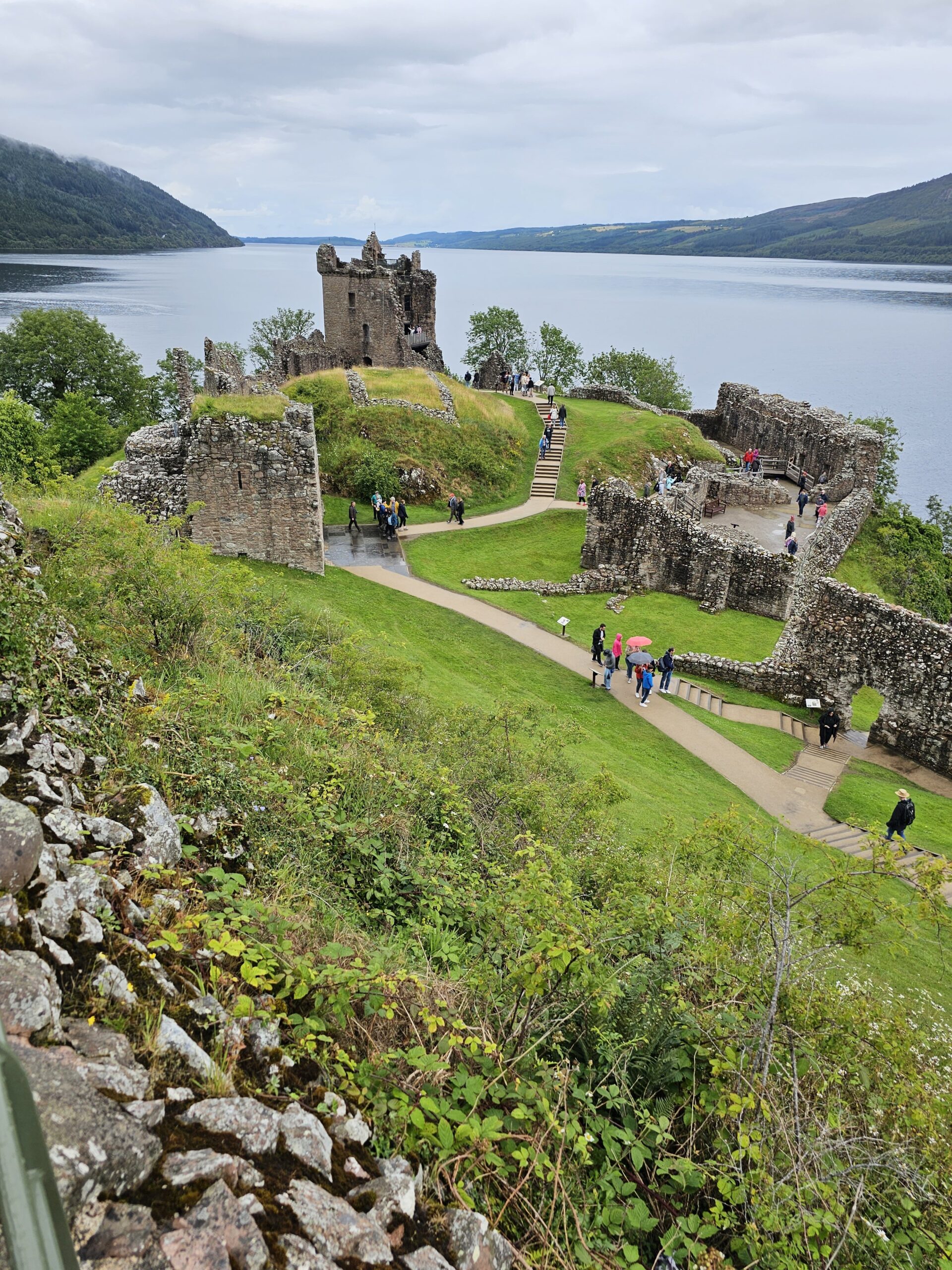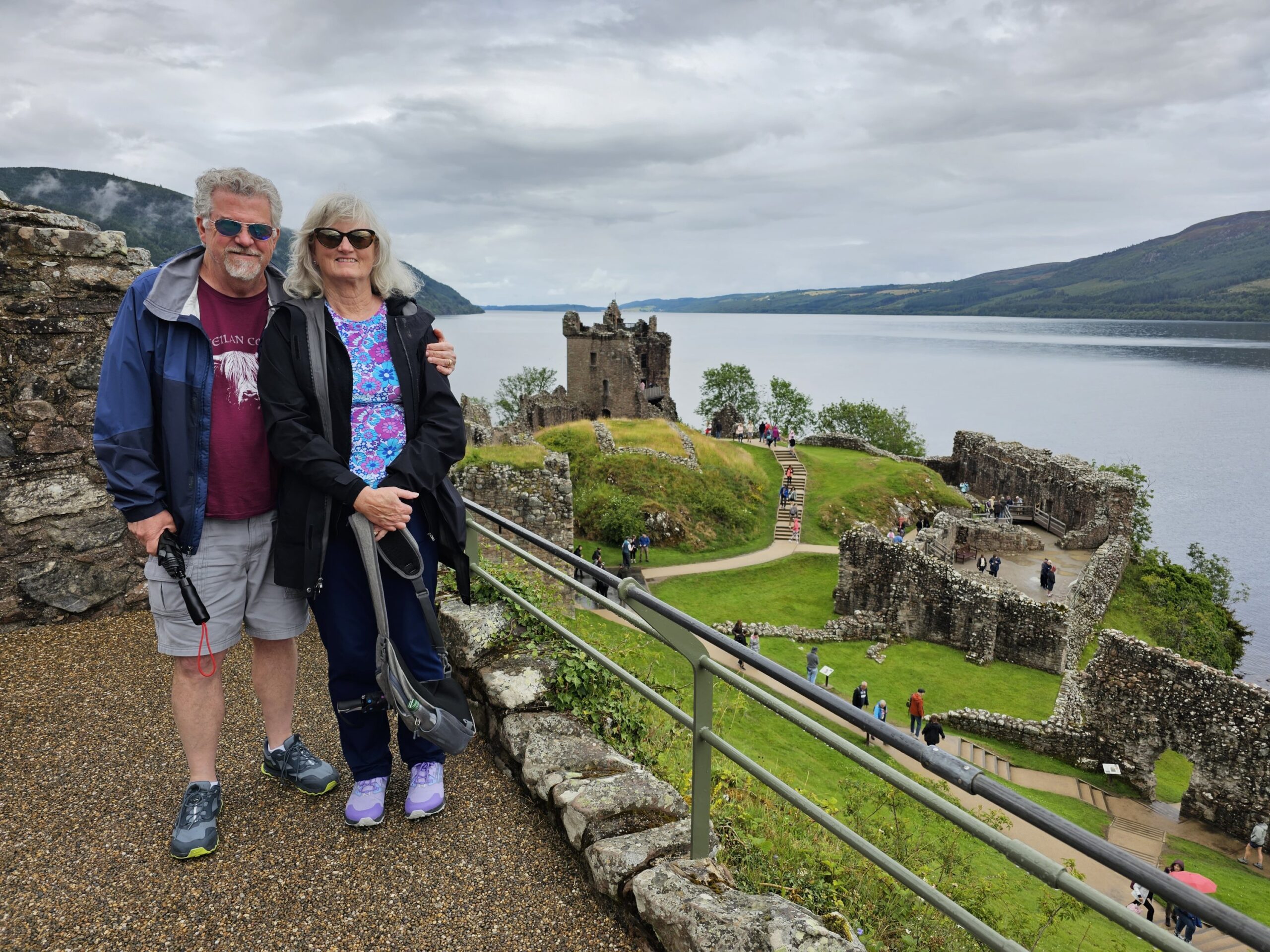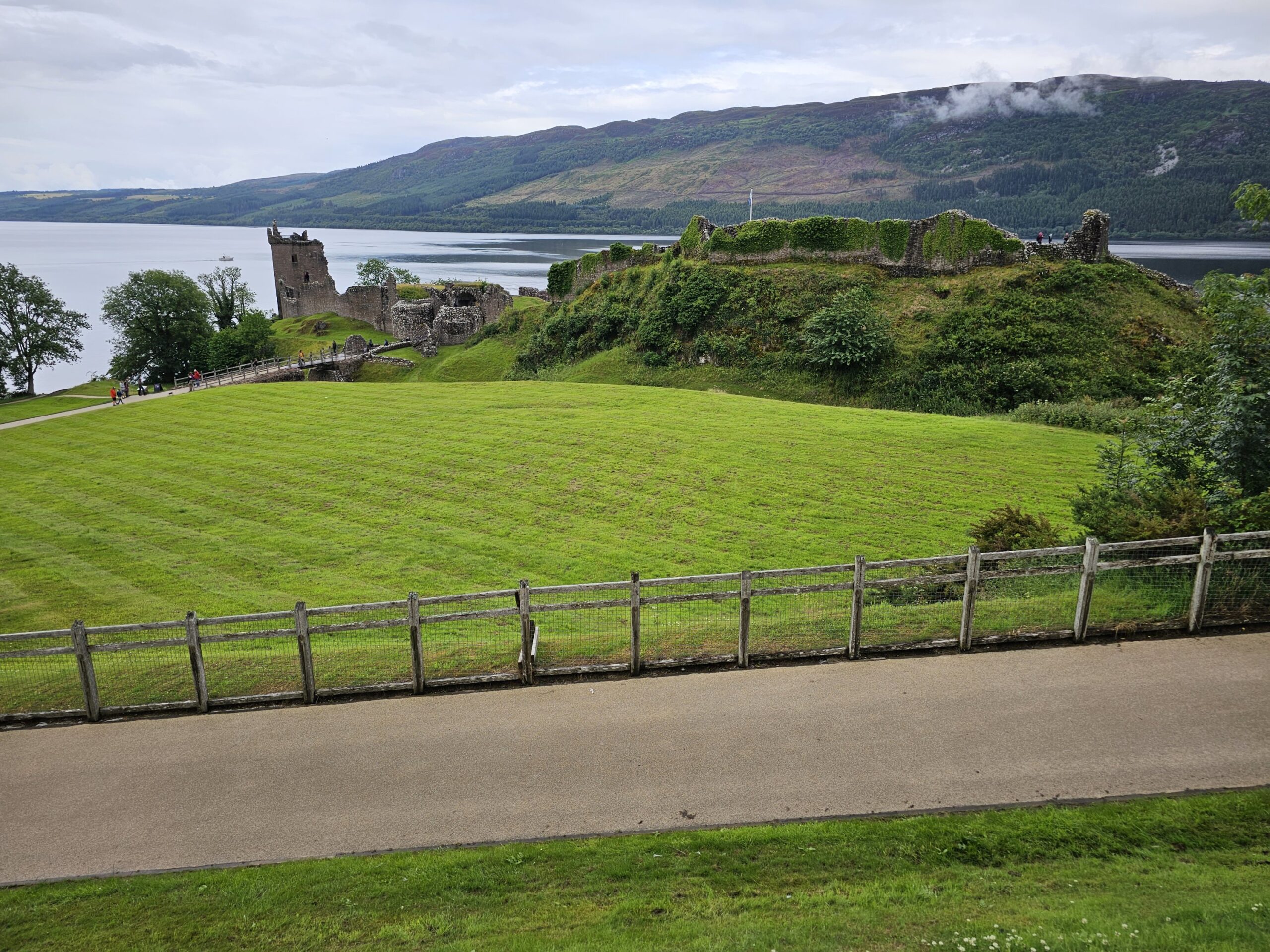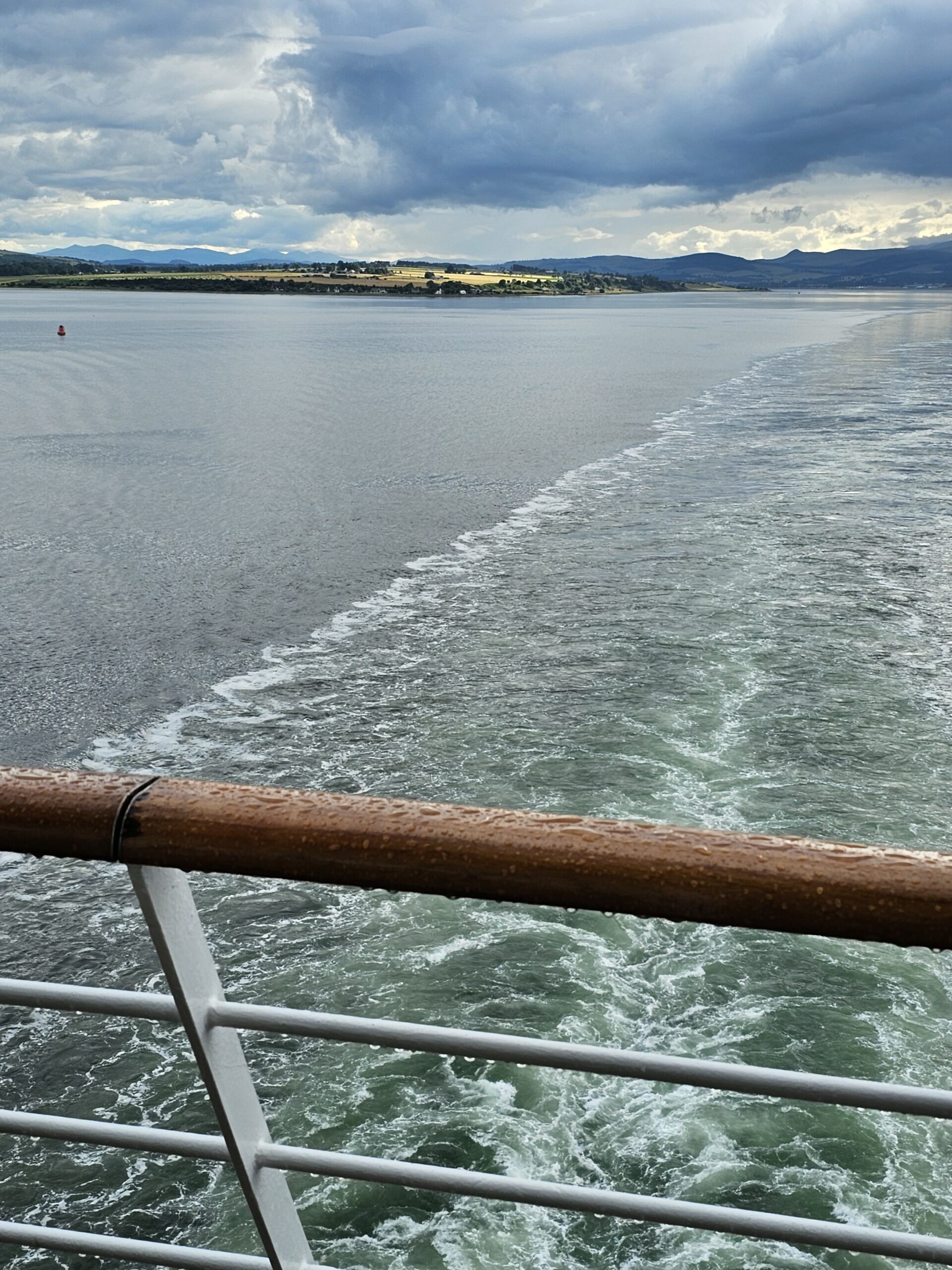We took a ship’s tour in the Orkney Islands, something we try to avoid, because you end up on a bus with 30-40 other people, and that almost always sucks ass. Fortunately, we visited some pretty cool sites, so the fact we had 4 people that were consistently late for the bus…the SAME 4 people….every fricking time….it was still a worthwhile trip. Our first stop was a site called Skara Brae, a 5000 year old Neolithic settlement.
There is a timeline along the short walk to Skara Brae, pointing out important events in history. I’m pretty sure I understand 5000 years is a long time ago.
This site was discovered in the winter of 1850, when a huge storm hit the islands, doing widespread damage and killing over 200 people. The storm stripped the sand from a knoll called Skara Brae, and the locals discovered the ancient grouping of homes, without roofs, after the storm cleared.
A home adjacent to the site, the Skaill House, had a self taught geologist, who began an excavation of the site. After four houses were uncovered, the work was abandoned in 1868. The site was unfortunately plundered over a single weekend in 1913, and in 1924 another storm swept away part of one of the houses. At that point it was decided by the local authorities to preserve the site, and it’s well preserved today.
In the end they discovered a total of 10 houses here. The houses were occupied from 3180 BC to 2500 BC. The houses were built sunk into the ground into mounds of prehistoric waste called middens. This provided the houses with stability and well as insulation against the areas harsh climate. Sounds like the houses of the future based on current politics. Living in waste! Yippie!
The middle of the homes have a stone hearth for heating and cooking, and the fuel they used was peat, just like in Ireland. I’m sure the Biden administration will put a stop to that! Think of the carbon!
A number of the homes have built in furniture, with seating and even evidence of toilets and drainage away from the home. They even had signs that said “No Admittance” in English to keep those nasty Brits at bay! How forward thinking!
This is the most preserved house of the lot, with obvious IKEA furniture. Just look at that shelving system in the back! How many damned hex screws did that take to put together, and can you imagine how much the box weighed? My aching prehistoric back!
The two rectangular areas are actually beds, with the hearth in the center of the room. These houses did have roofs, with a hole in the top to let out the smoke from the hearth.
Directly adjacent to Skara Brae is the Skaill House, and the tour of the house was included in the ticket to Skara Brae. There weren’t a lot of items in the house that caught my attention, but this plate set did. Captain Cook’s ships, the HMS Resolution and HMS Discovery, were headed to England following Cook’s death (in Hawaii) during his third (and obviously final) voyage in 1779. Rough seas and gale force winds blew the ships off course and they made first landfall in the Orkney Islands.
As is customary, the ships paid tribute to those that took care of them during their stay, and this plate set was given to the Skaill family. Perhaps it’s just the historic maritime geek in me, but these plates weren’t only used to serve Captain Cook, but likely served Captain Bligh, of “Mutiny on the Bounty” fame, as Bligh sailed with Cook during Cook’s second voyage. Very cool stuff!
Also of interest, when we first bought our current house from my grandmother, our bathroom looked almost identical to this…salmon colored sink, bathtub and toilet. A bygone era….thank god! We couldn’t get rid of that crap fast enough. What an eyesore!
I also thought it was nice to see them displaying the Queen’s Mother’s sign-in on the visitor guestbook in the house. She visited this house twice, as the area was so lovely. I’d agree, as long as you don’t go into the bathroom!
After waiting for 4 people to show up (guess who!), the bus moved on to our next stop, the Ring of Brodgar. Sounds like the next Harry Potter book! The Ring of Brodgar dates from about 2600-2400 BC, which makes it older than Stonehenge. The stones come from at least seven locations on Orkney.
It is estimated that at one point there were 60 stones in the circle, but today there are only 36. Of those, 21 are still standing, 13 of which were re-erected when the site came into state care in 1906. It is unknown what the ring was used for, but it most certainly had a ritualistic purpose of some sort.
The Scots even used the Ring of Brodgar for tank training in 1941. This would of course be unheard of today. Man, 1941…the good old days!
Our last stop of the tour….after waiting for a certain foursome to appear, was the Standing Stones of Stenness. This site is just a few minutes from the Ring of Brodgar. This site is thought to be a henge monument, possibly the oldest in the British Isles. I gotta admit, I hate all of the uncertainty with these sites.
There are only 4 stones today, but it’s thought that there were a total of 12. You can see evidence of the missing stones in the ground.
In 1814, a local farmer who was leasing the land began to tear the stones down, getting annoyed at having to plow around them. He destroyed a famous nearby stone called the Odin Stone, and then toppled one of the Stones of Stenness before he was stopped. The local population was so enraged that they tried to burn his house down…twice. I’d have carried a torch along with them! What a dick!
Following the tour we went into the town of Kirkwall and visited the St. Magnus Cathedral. Construction began in 1137, and it took over 300 years to finish. Sounds like a contractor I’ve dealt with!
The cathedral is something to behold, particularly considering the current local population is only 10,000 people, and was considerably smaller back when the cathedral was first completed.
I found this spot in the cathedral worthy of note. In nearby Scapa Bay, the HMS Royal Oak was torpedoed by a German U-Boat on October 14th, 1939. There were 833 men who lost their lives as the ship quickly sank. The book below lists all of their names.
The Orkney Islands pulled out all the stops for our departure! Very cool!
Before heading to bed that night we were treated to this sunset. It was about 11:00 PM when I took this photo. We are truly heading to the land of the Midnight Sun!
We were supposed to head to the Faroe Islands next, and actually pulled into the harbor and spun the ship around about a dozen times, before leaving. The Captain said it was due to the weather making it unsafe to dock, but it was calm and sunny, so that was total BS. Shortly after this rude departure, Kim found out that a week prior there had been an incident with the locals hunting pilot whales in the harbor, and it’s my belief that Oceania decided to make a political statement and not pull into Port. Let’s just say Chris was NOT a happy camper, as I had over $2000 invested in a group tour that we cannot get reimbursed for! Grrrr!
Then, to make matters worse, the Captain again decided to skip our first stop in Iceland, Eskiforjordur, again because of weather. What the firetruck?? I hate this guy!! To make it up to us he decided we could spend two days in our next port, Akureyri, Iceland. I think he has a mistress there….nothing else makes any sense! Again, I hate this guy!
Ok, rant mode off. Next post, two days in Akureyri, the home of the Captain’s mistress. Asshole!


